

SIGNS AND WONDERS
DEAF VISUAL ARTIST FINDS THE EXPRESSIONISTIC BEAUTY IN AMERICAN SIGN LANGUAGE BY CANNON TAYLOR PAGE 13
+ IN THIS ISSUE | YET ANOTHER STORY ON THE UNHOUSED (DO WE STILL CARE?) | VOTE ON RECREATIONAL POT MET WITH CITY’S SKEPTICISM ON STAGE: THE IMMIGRANT EXPERIENCE, CIRCA 1973 14 THINGS TO DO IN COLORADO SPRINGS RIGHT NOW










A Pikes Peak Media Company
“affected by leviathan political anxieties’

PUBLISHER
“TOUCH” by Skylar Sypher
by Adam Biddle
Francis J. Zankowski
EDITORIAL
EDITOR-IN-CHIEF Ben Trollinger
REPORTERS Noel Black, Karin Zeitvogel, Cannon Taylor and Andrew Rogers
CONTRIBUTORS
Lauren Ciborowski, Bob Falcone, Jeffery Payne and Rob Brezny
COPY EDITOR Willow Welter
SALES
AD DIRECTOR JT Slivka
ACCOUNT EXECUTIVES
Monty Hatch, Josh Graham, Carla Wink and Karen Hazlehurst
AD COORDINATOR
Lanny Adams
ART
SENIOR EDITORIAL DESIGNER
Adam Biddle
OPERATIONS
DIGITAL AND MARKETING MANAGER
Sean Cassady
DISTRIBUTION MANAGER
Kay Williams

voter approval,
tightens security in wake of attack,
know what works. Why won’t we do it?
musician Bryse Taylor creates poignant soundscapes

the front lines of

Skylar Sypher outside Cottonwood Center for the Arts. | Credit: Ben Trollinger
Director Jenna Moll Reyes at “The Heart Sellers” rehearsals | Credit:
Downing, courtesy: Theatreworks
Member Yolanda Avila.| Credit: Karin Zeitvogel

By BEN TROLLINGER • ben.trollinger@ppmc.live
It feels like I’m staring into the abyss, but the abyss is being aloof. Not rude exactly, but not friendly either. A little eye contact would be nice. But no, David Lynch movies always refused to explain, and thereby reduce, themselves in terms of explicit themes and moral lessons. Watching a Lynch movie was about giving in and then pulling yourself back out, forever changed, however inexplicably.
The ant-eaten ear on the manicured lawn. The filthy goblin lurking behind an L.A. diner. Headlights on the rapidly flickering lines of a desolate highway. A singing lady in the radiator. A deformed man combing his hair in a mirror. A shattered Isabella Rossellini walking naked down Main Street. Kyle MacLachlan drinking a damn fine cup of coffee. Dennis Hopper with an oxygen mask. Robert Blake without eyebrows. These images and scenes will be forever seared in my brain, whether I knew what they meant or not.
David Lynch, who passed away on January 16, famously refused to explain his surreal and often haunting movies. And he wasn’t just being coy. Instead, he truly didn’t know what his films were “about” any more than the viewer. They were about everything, and nothing at all. They were like
REST IN PEACE, WRAPPED IN PLASTIC
dreams — open to, but always just beyond the grasp of, interpretation. Lynch was a fisherman of his own febrile subconscious, playing hooky in a bright shining abyss.
My now 90-year-old grandmother, Norma Sparks, first introduced me to Lynch through his 1984 adaptation of “Dune.” We rented it on VHS. She thought I might like it because I was gaga over the original Star Wars trilogy. It was far weirder than that — the lecherous, boil-covered Baron Harkonnen floating through the air was far more disturbing to me than Darth Vader ever would be. Lynch’s “Dune” wasn’t the blockbuster amusement park ride I was expecting. Instead, like all his subsequent movies, it was a mind-altering hit of spice mélange.
Lynch famously disavowed “Dune” and forever turned his back on big-budget moviemaking (let’s face it, though, his version still surpasses Dennis Villeneuve’s arid interplanetary slog), but I was hooked, nonetheless. Next came far headier stuff — “Eraserhead,” “Blue Velvet,”
“Twin Peaks,” “Wild at Heart,” “Lost Highway,” “Mulholland Drive.” The notion that a movie could be deeply affecting, but without any clear message, seemed revolutionary to me then and now. Lynch was a true artist and visionary. He made no apologies, including for the cigarettes he loved so much, even as they slowly killed him. But above all, he saw beauty in the mystery. He made us face our darkest fears and fantasies, the ones lurking wildly and not-so-deeply under the tender surface of suburban respectability. He reminded us how strange it is to be human.
"LYNCH WAS A TRUE ARTIST AND VISIONARY. HE MADE NO APOLOGIES, INCLUDING FOR THE CIGARETTES HE LOVED SO MUCH, EVEN AS THEY SLOWLY KILLED HIM. BUT ABOVE ALL, HE SAW BEAUTY IN THE MYSTERY."
“I don’t know why people expect art to make sense,” Lynch once said. “They accept the fact that life doesn’t make sense.”
Even though he rejected explicit sense-making, he was never nihilistic and never ceased in his pursuit of poetry and truth. As he was fond of saying, negativity is the enemy of creativity.
Rest in peace, David Lynch, wrapped in plastic.
LETTERS TO THE EDITOR must be signed with full name and include daytime phone number, full address or email address. Letters should be no longer than 300 words. We reserve the right to edit all submissions. | EMAIL ADDRESS: letters@ppmc.live
JASON
Wednesday, April 30
2025 SEASON
DWIGHT YOAKAM
Friday, May 9
LEON BRIDGES
Thursday, May 22
STYX & KEVIN CRONIN
Sunday, June 29
KING GIZZARD & THE LIZARD WIZARD
Friday, August 8
“WEIRD AL” YANKOVIC
Thursday, September 4


NEWS .
STRAINING CREDULITY
City Council calls for revote on recreational pot, saying voters were confused in November
by KARIN ZEITVOGEL karin.zeitvogel@ppmc.live
Four months after City Council
President pro tem Lynette CrowIverson said City Council was “not a democracy,” the nine-member governing body for Colorado’s second-largest city was gearing up for another potential fight over just how democracy works.
At the heart of the issue is whether recreational marijuana sales should be allowed in Colorado Springs.
The topic was brought before City Council in September and again in January, that time with the added detail that 55% of voters, in voting for Question 300, had said in the general election in November that they want rec to be sold by medical marijuana dispensaries that are 1,000 feet away from schools, day cares and rehabilitation facilities.
That clashed with what City Council voted on in September: to increase the direct pedestrian distance between shops that sell recreational pot and facilities that work with vulnerable populations like children and people with addiction disorders from 1,000 feet to a mile.
In a letter sent to Mayor Yemi Mobolade in January, more than a dozen cannabis industry and other business owners, young and old veterans, including a Vietnam-era Army medic, state politicians, lawyers and others said that by passing the broader buffer zone, council was imposing a “backdoor ban on recreational marijuana” in the Springs.
“That the City would circumvent the citizen initiative process, substituting its will for the clear will of its voters, is contrary to the City’s pre-existing rules … as well as decades of case law. Respect for the voice of the electorate is a key underpinning of our election system,” the letter says. The mayor of Colorado Springs can veto most ordinances but has used that veto sparingly, a spokesperson for Mobolade’s office told The Independent.
Aaron Bluse — a principal in Altitude
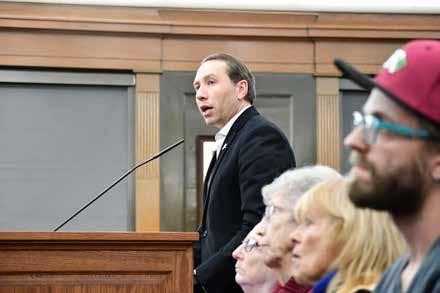
Organic Brands, vice president of the Colorado Springs Cannabis Association and a Colorado Springs resident — said the 1,000-foot exclusion zone “ mirrors the national limits in other states, as well as the Drug Enforcement Agency’s buffer.”
He also noted that liquor stores are required to be only 500 feet away from schools, day cares and rehab facilities.
At its Jan. 8 meeting, the city Planning Commission recommended that the only clause in the draft ordinance that mentioned the setback be deleted. The commission also recommended deleting a clause at the end that says Question 300 would be superseded by the results of a ballot issue that voters might be asked to decide on in the April municipal election.
Councilor Nancy Henjum said she supported the Planning Commission’s proposal to remove any mention of the 1-mile setback “so we comply with the law” and back the will of the voters. Henjum, one of two council members who voted against the broader setback in September, is running for re-election in District 5 in April.
But Councilor Dave Donelson, who voted to extend the setback four months ago, took another tack, saying he was unsure that citizens “knew what they were voting on” in November because Question 300
appeared on ballots alongside the opposing ballot issue, 2D, which called for the city charter to be amended to ban recreational marijuana.
Some people voted “yes” on both, Donelson noted. “So I think there was confusion.”
He offered two ways to fix the confusion: Reduce the setback distance from 1 mile to 1,000 feet in the City Council ordinance “so that we are aligned with what was voted on and there would be no conflict,” and “put a ballot measure on the April 1 ballot,” when Colorado Springs voters will elect six district council members, “to repeal recreational marijuana so we know once and for all that the citizens want recreational marijuana sales in Colorado Springs or not.”
“The previous vote was, I think, confused, and I really think it could have had the impact that something passed that the majority of citizens don’t support.”
What he said echoed a statement made in November by a spokesman for the anti-rec Colorado Springs Safe Neighborhood Coalition when 2D failed and 300 went through. The Safe Neighborhood Coalition plowed more than $1 million into the November elections, hoping to defeat Question 300, according to a report on KOAA.
Getting a measure on the April 1 ballot would cost between $300,000 and $400,000, according to a council member who spoke out against repealing the outcome of the Nov. 5 vote. That would be taxpayer money.
On Jan. 14, City Council voted 6-3 to reduce the setback distance to 1,000 feet but left the question of whether voters will be asked in April if they want to repeal Question 300 up in the air.
“Today’s just setting up the structure to enact retail marijuana,” City Clerk Sarah Johnson said.
“The second reading will be the 28th. At that meeting, depending on what they wish to do, they may or may not place something on the ballot to repeal the initiative,” she said, referring to Question 300. Jan. 28 is also the deadline for putting a question or issue on the ballot.
Medical marijuana dispensaries will be able to begin applying for licenses to sell rec in February.
Among the dozens of members of the public who testified, there were cannabis business owners, veterans and boardcertified addiction psychiatrist and clinical professor at the University of Colorado School of Medicine Dr. Bryon Adinoff.
He said the expression “the voters were confused” was interesting but probably invalid.
“I really don’t believe that’s the case. … I would challenge those of you on City Council to listen to the 15 to 20 minutes of conversation that you all had amongst yourselves prior to giving the citizens a chance to talk, trying to figure out … the amendments, the different votes.
“If you want to talk about confusion, that is confusion. You all are putting yourselves in a very, very difficult situation that is getting very difficult to talk your way out of,” he said.
Councilwoman Yolanda Avila said it “boggles my mind” that her fellow councilors were even considering putting Question 300 back on the ballot in April,
Aaron Bluse urges Colorado Springs city councilors not to hold a new vote on Question 300 at the City Council meeting on Jan. 14, 2025. | Credit: Karin Zeitvogel
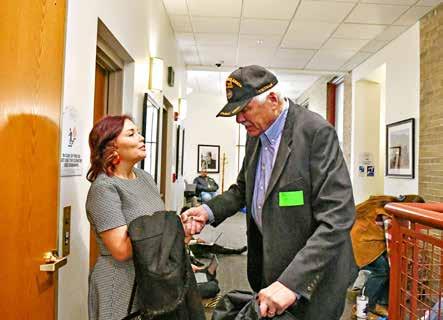
particularly as voter turnout will probably be much lower than in November, which was a presidential election.
“I’m really frustrated that we want to do it again, saying, ‘No that’s really not what they intended.’ The only way you know is by results, and the results were that 300 passed,” she said.
Bluse also bristled at the proposal to vote on Question 300 again.
“The decision was made. It needs to be respected. I think in our country, in certain parties and at certain points in time, there has been a lack of willingness to concede,” he told The Independent.
City councilors said in September that a big reason for extending the setback and imposing other restrictions on weed sales was to protect children and youths in Colorado Springs.
The amount of THC, or tetrahydrocannabinol, which is chiefly responsible for the psychoactive effects of marijuana, has risen over the years from around 4% in 1995 to 19% in 2020. A report published last year in Pediatric Reports said marijuana has become one of the most frequently used illicit substances among adolescents in the United States and that using marijuana during the teen years, which are crucial for neural development, has been linked to poor cognitive outcomes such as disadvantaged learning, poor memory and attention, lower verbal
intelligence and a greater likelihood of being diagnosed with psychosis as an adult.
“Now, I’m an old man, so maybe I don’t appreciate the concerns of parents of today,” Kent Jarnig, the Vietnam combat medic who signed the letter to the mayor, told The Independent.
“People die from alcohol, and it’s on every corner of Colorado Springs. Any kid that wants alcohol can find someone to buy it for him. Same thing with cigarettes,” said Jarnig, who uses medical and recreational marijuana for pain, for depression linked to post-traumatic stress disorder and to help him sleep at night.
“But having a product that helps people and saying no to it … when voters said, ‘Yes, we want this,’ is idiotic.”
A city official estimated the money reaped from the 5% sales tax that will be imposed on sales of recreational marijuana could reach around $2 million in the first year. That money will be used to improve services for veterans, including those with PTSD, provide mental health care programs and fund public safety in Colorado Springs.
“But if they limit this too much, that tax benefit will fall significantly and not be of the same material benefit to Colorado Springs,” Bluse said. “They need to just leave things as they’re written in Question 300 – as the will of the voters wants them to be.”
Military bases restrict access after deadly attack, explosion
Stricter measures put bad guys on notice and send a message that things are “no longer routine”
by KARIN ZEITVOGEL • karin.zeitvogel@ppmc.live
The U.S. Air Force Academy and Peterson and Schriever Space Force Base made it tougher for individuals without Department of Defense IDs to get on base following the deadly terrorist attack in Louisiana and vehicle explosion in Nevada on New Year’s Day, both of which involved former or current service members.
One of the service members involved in the deadly incidents, Master Sgt. Matthew Livelsberger, was associated with several Colorado Springs addresses, and his unit, the 10th Special Forces Group (Airborne), “has a presence at Fort Carson,” a spokesperson for the sprawling Army base told The Independent.
But Fort Carson “has had (Trusted Traveler) out of effect for a couple of years now,” and the Green Beret, who died by suicide before the Cybertruck he was in exploded in Las Vegas, was assigned to the 1st Battalion of the 10th SFG(A), which is based in Germany, the base spokesperson said.
U.S. Northern Command directed bases in its area of responsibility, which includes the continental United States and Alaska, to step up security measures in early January. A spokesperson for NORTHCOM, which was set up a year after the attacks of Sept. 11, 2001, to defend the U.S., said the command had instructed bases to suspend the Trusted Traveler program because of the New Orleans attack and the Cybertruck explosion.
Fourteen people were killed and dozens injured in New Orleans on New Year’s Day when former U.S. soldier Shamsud-Din Jabbar drove a rented vehicle into a crowd of revelers on Bourbon Street. Livelsberger was the
only person who died in the Las Vegas explosion.
While Peterson and Schriever Space Force Base cited the New Year’s Day incidents as the reason Trusted Traveler had been suspended, a spokesman for the Air Force Academy said the change to its security protocols was prompted by “no specific act.”
Regardless of why bases put stricter access requirements in place, the stepped-up checks send a signal to potential attackers that “things are no longer routine” and visitors are being watched more closely, retired Air Force Col. John Probst said in an interview with Military.com.
“There’s more alertness being paid to those coming and going, and you never know who’s watching,” Probst, a former Security Forces officer and the executive director of the nonprofit Air Force Security Forces Association, was quoted as saying in the interview, published Jan. 6.
People who don’t have a Defense Department ID can still get onto the Colorado Springs bases but need to obtain a pass beforehand. The offices that issue passes at the Air Force Academy and Peterson are open on weekdays only. Visitors to Fort Carson can apply for a pass online or pick one up at Visitor Control Centers, located at some of the base’s gates.
A week after it directed bases to suspend Trusted Traveler, NORTHCOM said in a statement that installation commander could reinstate the program. The Air Force Academy spokesman said the “temporarily adjusted processes” to access the base and campus would remain in effect “until they are deemed not necessary.”
Kent Jarnig shakes hands with another speaker at the City Council meeting. Jarnig uses medical and recreational pot for pain, for depression caused by PTSD and to relax. | Credit: Karin Zeitvogel
Another homelessness story
We know what works. Why don’t we do it?
By NOEL BLACK noel.black@ppmc.live
This past Christmas Eve, Kristy Milligan was getting ready to leave work. She runs Westside Cares, a nonprofit in Old Colorado City that provides food, health care, clothing and financial assistance to people experiencing homelessness. It’s always busy and difficult just before the holidays, but it’s her favorite time to work and to be present for the people who often need the most assistance. But she was looking forward to some rest and some time off with friends and family.
As she was closing up, she ran into a client named Denise King. Kristy makes a point of knowing everyone who comes through the doors of Westside Cares, and Denise was known for her generosity. Whatever she had, whether it was a few dollars, a sleeping bag or a warm coat, she would sooner give it to someone else living on the street than keep it for herself. Kristy knew the weather was about to turn frigid and told Denise she hoped that she would keep enough warm clothing and bedding for herself over the holidays.
“I said, ‘I think it would really serve you to focus on filling your own cup first. You know, you can’t pour from an empty cup. And I see you doing all these things and giving your last dollar to other people and giving your last sleeping bag to other people, and I’d really love to see you taking care of yourself first.’ And she said, ‘I can’t stop helping people because that would make me no better than the people who marginalize us.’”
On New Year’s Eve, the temperature dropped to 17 degrees, and Denise King died in a tent underneath the 31st Street bridge near Highway 24. Though autopsy results have not yet been released, it appears she froze to death. She was 51 years old.
Though the 2024 El Paso County Coroner’s report has yet to be released, Denise King will likely join the dozen or so homeless people who have died of hypothermia on the streets over the past four years. And those numbers often don’t include those who die in the emergency
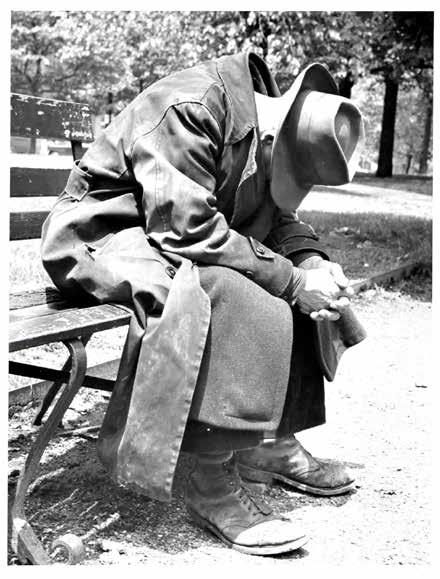
room or hospital. All told, more than a hundred homeless people die on the streets of various causes each year. Who cares?
A lot of people, it turns out. You probably care. Whether you volunteer at a homeless outreach organization, donate food or clothing, give money directly to people on the street or are a business owner helping to point them in the direction of services — you care! Even if you’ve stopped doing anything other than wanting the problem to go away because you’re tired of seeing other people suffer. Even if you’ve stopped caring because
you’re sick of homeless people, and you think they’re lazy and blame them for all their own problems and their failure to pull themselves up by their bootstraps and get a job, you care.
Everyone cares!
So why does it feel like the problem is getting worse or, at least, not better?
As we’ve recently reported, downtown businesses owners and the public library are losing patience; shoppers are increasingly reluctant to come downtown; and those who care the most are increasingly burnt out. And why does it feel like Mayor Yemi Mobolade’s
Homelessness Response Plan 2025 — with all its glossy pages, its bullet points and its “data-driven decisions” that promise “to keep homelessness rare, brief and nonrecurring” — can’t deliver anything but the status quo?
A BRIEF HISTORY OF HOMELESSNESS
Though people have experienced what we now call “homelessness” throughout history, “homeless camps have been more or less permanent fixtures within U.S. cities since the rise of modern industrialism in the latter half of the 19th century,” writes Chris Herring, professor of sociology at the University of California, Los Angeles in an article called “Tent City, America” published in the online journal Places in 2015.
The beginnings of what we now think of as modern homelessness, writes Herring, coincided with the end of the Civil War, which also coincided with the construction of the transcontinental railroad. The network of rail lines spanning the U.S. allowed workers to travel widely throughout the country.
According to the National Coalition for the Homeless, much of homeless culture arose around the railroads. And by the 1890s, there were three distinct classes of homeless people: there were hobos, who were itinerant workers who had their own distinct language, codes, politics and culture; there were “tramps,” who traveled but drank and didn’t work; and there were “bums” — those who just drank and lived on the streets and who undoubtedly suffered from addiction and other mental health issues.
Hobo “jungles” emerged near train stops as places where itinerant laborers could gather, prepare meals, sleep safely and exchange information about work.
And in the 1930s there were shantytowns called “Hoovervilles” — camps of makeshift shelters named for President Herbert Hoover, who presided over the Great Depression. There were also government tent camps for the migrant farmworkers fleeing the Dust Bowl made famous by John Steinbeck’s “The Grapes of Wrath.”
But when the U.S. entered World War II
All photos | Credit: John Suhay. Courtesy: The Pueblo Historical Society
in 1941, writes Herring, there was a 40year period during which homelessness was almost nonexistent.
“With the entry of the United States into World War II, and with the conscription of military-age men and the vast mobilization of the economy, the homeless colonies faded away.”
In the years following the war, many low-income people who might otherwise have become homeless were buoyed by social welfare programs created by the New Deal and decades-long attempts by the federal government to foster the growth of low-income housing, much of which was consolidated under the Department of Housing and Urban Development, which was created in 1965.
Though many of these programs were deeply flawed, and created new problems with chronic poverty, fewer Americans were unhoused during this period between the end of World War II and 1980 than during any other period in American history.
“Whether the long postwar boom ended because of the oil embargo and recession of the mid-1970s, or because of competition from rebounding European and Asian economies, is open to debate. But few dispute that the contemporary era of chronic homelessness in America began with the Reagan Revolution of the 1980s,” Herring writes.
In Reagan’s campaign to deregulate, privatize, cut taxes and shrink the federal government, he “slashed federal subsidies for low-income housing and psychiatric health centers and deinstitutionalized thousands of mentally ill patients. The all too predictable consequence was a dramatic rise in the ranks of the homeless, and the return of encampments to the streets and open spaces of American cities.”
Reagan wasn’t solely responsible for the much longer process of deinstitutionalization, which began with the creation of Medicaid under Lyndon Johnson, which also moved responsibility for acute psychiatric care out of the state hospitals back into local communities. But Reagan’s final closure of all psychiatric hospitals was the beginning of chronic homelessness — the most visible kind of homelessness — that persists to this day.
The 40-year period of relatively low homelessness in the United States
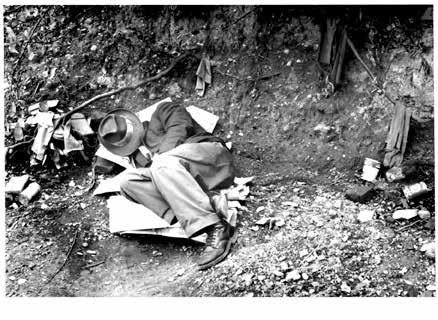
that followed World War II has now been surpassed by 44 years of chronic homelessness and an endless attempt at local fixes that simply haven’t worked. The United States, which is among the 10 wealthiest nations in the world by GDP, now has the fourth-highest rate of homelessness.
And in Colorado, homelessness continues to rise. According to the Colorado Coalition for the Homeless, chronic homelessness rose by 150% in the state between 2013 and 2023. And in 2024, it rose an additional 30%. Whatever we’re doing at the state level isn’t working.
According to the Pikes Peak Continuum of Care’s Point in Time (PIT) Count, chronic homelessness in Colorado Springs declined by 40% in 2024 compared with 2023. But it’s just one year, and because the count takes place on just one day, it’s notoriously suspect. Counting people, especially the chronically homeless, who are transient and have no fixed address is difficult.
And again, regardless of the decline in numbers, there are still a lot of people on the street. As Pam Zubeck asked in a recent column in The Pikes Peak Bulletin, “If the PIT count shows progress, why isn’t downtown feeling it?”
WE KNOW WHAT WORKS
Despite the persistence of homelessness, experts know what works. Not surprisingly, it’s housing and services, including food, basic health care, addiction recovery, job training and, in some cases, ongoing financial and
addiction support.
Ten years ago, I reported on a revolutionary experiment at the Colorado Coalition for the Homeless’ newly opened Fort Lyon Recovery Program in Bent County, about a two-hour drive southeast of Colorado Springs.
Originally the outpost from which Col. John Chivington launched the gruesome Sand Creek Massacre, Fort Lyon later became a sanatorium, and then a hospital, and then a low-security prison. When the state decided to close the prison, the campus, which looks like it could be a small liberal arts college just about anywhere in the Midwest, was given over to the coalition by the state of Colorado.
John Parvensky, the president of the coalition at the time, saw an opportunity to help chronically homeless people dealing with extreme addiction issues to recover and rebuild their lives by removing them from the communities where they were struggling and give them “a place where they can focus on themselves, focus on recovery, and provide opportunities for them to learn, get an education, and have vocational opportunities.”
The coalition had been taking a “housing first” approach to homelessness since its founding in Denver in 1984. The idea is simple to the point of being obvious: Housing is the most basic human need, and for anyone to truly get off the street and rebuild their life, it has to start with a safe and secure place to live and sleep. With Fort Lyon, the idea went further with what they call “trauma-informed
care,” which presumes that people dealing with homelessness caused by addiction, and the severe mental health issues and trauma that come with it, needed a complete array of support, or “wraparound” services close at hand right there in their living environment. Ask anyone who’s lived on the streets in a city without centralized services (as Colorado Springs used to be, and still is, depending on your situation) what the most difficult part about it is, and they will tell you that it’s the time and energy it can take to get to the scattered array of services you need. Breakfast might be served in one location, but then you have to walk a mile to get to a job-training service. If you need clothes (especially socks, because your feet get incredibly sweaty with all the walking you do), you have to go another facility half a mile away. If you’re lucky, you might make it to the soup kitchen by lunch at a church a half mile from there. Then, after that, you might have to walk an additional mile for a dentist appointment. Never mind having a job because getting your basic needs met, which most people who have homes take for granted, is your job. If you’re also dealing with mental health issues or addiction, it can be next to impossible. At Fort Lyon, along with having all these services in one central location, clients are also given two years to fully put their lives back together. They offer dormitory-style living on 552 acres next to the Arkansas River. It has Alcoholics Anonymous and Narcotics Anonymous support groups, individual counseling, health care, a cafeteria, and access to education and job training on-site and at the local community college.
If it sounds a lot like college, that’s because it is — it’s a campus approach to treating homelessness and addiction. And like college students, the clients have time not just to get their needs met but to work through their trauma, reflect and think about what they might want to learn and how they could once again contribute to society in a meaningful way.
“It’s person-centered,” said James Ginsburg, who ran the program at Fort Lyon when it began, “which means we are not going to create this model and make you fit into it, and when you don’t fit into it we’re gonna call you noncompliant. That’s been part of the system. It’s been, ‘Well if you don’t fit into our time
NEWS .
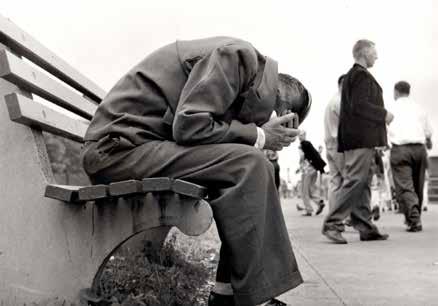
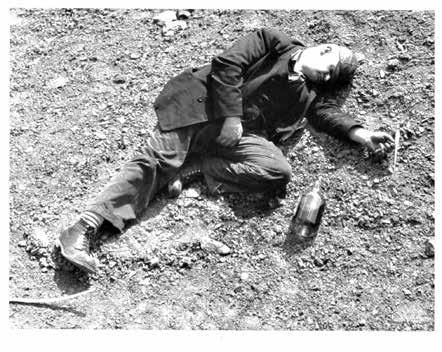
slots, our process, our procedures for accessing services, then you’re just lazy and noncompliant. Those systems may be intolerable to access. People, especially with mental health issues, can’t tolerate shelters or large waiting areas with masses of people and overstimulation. Part of our attraction to this is the 500 acres and allowing people to spread out and really slow down.”
The only hard and fast rule of Fort Lyon is that there are no illicit drugs, alcohol or weapons allowed on the campus under any circumstances.
After the two years, residents of Fort Lyon are placed in permanent housing in the Colorado communities of their choosing and given transitional support. Not everyone makes it all the way through the two-year program, which is now in its 12th year. But it’s served roughly 2,500 people since it opened its doors in 2013.
If there’s any disappointment, it’s that the Fort Lyon model hasn’t yet proven to be scalable to serve more people. But it’s not because of cost. In fact, housing and providing services to people at Fort Lyon was less than a third of what it cost the city and state when they were living on the street.
THE URBAN CAMPUS MODEL
Not every person dealing with homelessness needs to be removed to a faraway campus. When the state psychiatric hospitals began downsizing
in 1965 before they were finally closed in 1980, mental health professionals moved toward treating and caring for people “in vivo,” or in the communities they lived in.
But as federal funding dried up in the 1980s, local communities didn’t necessarily want to pay to care for the indigent and chronically homeless.
What emerged from that decentralization of funding was a decentralized patchwork of services provided by nonprofits and nonprofit religious groups. And, as mentioned above, scattered services make anything but basic survival difficult for many, especially those with mobility issues.
Springs Rescue Mission (SRM) on East Las Vegas Street downtown near the former Martin Drake power plant has emerged as the leader in providing homelessness services in Colorado Springs over the past three decades. What started out as a homeless street ministry founded by Paul and Marilyn Vyzourek in 1995 has since grown into a nearly 9-acre campus on the south side of downtown. If you haven’t been there, it’s an incredible model for what homelessness services can be in an urban setting.
Travis Williams, the new president and CEO, gave me a tour of the facility on a cold, sunny morning just after the new year, and it’s truly impressive. It has everything from apartments that offer permanent supportive housing to basic overnight shelter, a cafeteria, storage lockers, fenced-in bike racks, day shelter,
health services, job training and even a kennel for pets. A variety of nonprofit partner organizations and care providers have offices on the campus or come there to serve clients. And it’s fenced off with a single point of entry to keep drug dealers and other bad actors out. It’s humane, it’s person-centered and, despite rumors that you have to sign a declaration of Christian faith to receive their services, the only actual barrier to entry is any kind of violent or disrespectful behavior.
Williams is proud of the work everyone is doing there but admits it’s frustrating that they often can’t reach the chronically homeless.
“Visible signs of homelessness have increased over the years — trash, tents, etc. But what most people in the community don’t see are the 400 to 450 individuals at SRM who are leaning in to access services and having the success stories.”
There are downsides to SRM’s model. At a basic level, it just doesn’t have enough capacity to serve everyone who needs their services. Williams says they try not to turn anyone away, especially on frigid winter nights, but they only have 450 shelter beds, which is less than half of the 2024 PIT count of 1,146 unhoused people in Colorado Springs (though Kristy Milligan estimates the number is closer to 2,500, and Williams notes that roughly 6,000 unique individuals came through the doors of SRM last year). Additionally, the beds they do have offer no privacy,
and SRM’s faith-based approach isn’t for everyone, even if it isn’t obligatory. But the biggest challenge facing both SRM and the Colorado Coalition for the Homeless is the very thing that their clients need most: affordable housing. Both organizations aim to move their clients into either permanent housing or permanent supportive housing. But the reality right now in Colorado is that there simply isn’t enough inventory.
Multiple sources estimate the state’s shortage of housing at more than 100,000 units.
Kristy Milligan at Westside Cares drove the point home when she told me, “ I’ve got 500 people on the coordinated entry waitlist. We’re placing about two a month. And we’ve got 3,800 people on the Colorado Springs Housing Authority waitlist.”
MOTHER-IN-LAW COTTAGES
Some relief for the housing shortage could come from House Bill 1152, which Gov. Jared Polis signed into law last year. The bill makes it legal for almost anyone with a single-family detached home to build an accessory dwelling unit (ADU), aka mother-in-law cottage, in their backyard.
The bill is brilliant in a way.
First, it recognizes that housing availability for lower-income people and families is a statewide problem.
Second, it takes the matter out of the hands of local planning boards and commissions, who, under pressure
from neighbors, often use existing zoning regulations (think setback and lot coverage restrictions, etc.) to deny permits for this type of construction, thus preventing the addition of affordable housing stock. As Jerusalem Demsas, a writer for The Atlantic, put it in a 2023 piece titled “Colorado’s Ingenious Idea for Solving the Housing Crisis,” “The problem is that the local institutions charged with land-use decisions are attuned to parochial complaints, not largescale needs.”
Third, in a state where even a whiff of higher taxes can mean instant political death, the bill simply leverages homeowners’ desire to increase their property value. It’s a government tool that doesn’t require government spending.
Finally, if there is a boom in ADUs, they would likely be in middle- and higherincome neighborhoods, where people can afford to build them. And studies have shown that lower-income individuals and families living in higher- or mixed-income neighborhoods have a greater chance of staying out of poverty long term.
But even if this ADU carrot without a stick does significantly increase the state’s housing supply, it could take a long time. Not everyone has $200,000 sitting around to build a new unit on their property, and interest rates are still relatively high. So what else can we do?
THE PROBLEM WITH THE PROBLEM
As Aimee Cox, chief housing and homelessness officer for Colorado Springs, will tell you, one of the biggest problems in solving the problem of homelessness is understanding the problem. And one of the most difficult parts of the problem is calculating the actual cost of homelessness to taxpayers.
Officially, the city of Colorado Springs allocates $500,000 for shelter beds and funds both the Homeless Outreach Team (HOT) and Homeless Outreach Program (HOP).
But the actual cost to taxpayers is likely much higher when emergency services and public safety are factored in. And the problem with that is those costs are hidden in the budgets of emergency services and public safety, not to mention
the costs to businesses and other public resources like the library.
Though Cox and her team are currently working on an accurate number, Mayor Mobolade himself has estimated the total average cost of an unhoused person living on the street to be around $50,000 per year. It doesn’t take advanced math to figure out that $500,000 won’t cover the costs of 1,146 unhoused people in the community.
Obviously, organizations like Springs Rescue Mission are picking up a big slice of those costs through donations and grants. But that doesn’t mean that taxpayers aren’t still footing the bill for tens, if not hundreds, of millions of dollars in invisible costs like emergency services every time the Colorado Springs Fire Department gets called and hauls someone to the emergency room. If those costs can be identified, perhaps taxpayers would be more amenable to spending that money on housing and services that prevent those far more expensive emergency responses.
Keep in mind that the cost of housing a person has been shown to cost less than a third of what it costs for them to live on the streets. For example, Travis Williams at Springs Rescue Mission says it costs around $12,000 to house a person in their residential addiction program for a year.
Once voters are able to see how much chronic homelessness on the streets is costing them, it’s hard to imagine that a community with the highest number of churches and religious nonprofits per capita anywhere in the United States — that pays 5.7 cents in sales tax for every 10 dollars to fill its potholes and repave its streets to the tune of $50 million per year — couldn’t be persuaded to pay a few more pennies in taxes to help our chronically homeless population at the very least, especially if it would free up emergency-services money that could be better spent elsewhere.
If Mobolade, who arrived here as an aspiring Christian minister, got elected by an unaffiliated, independent voter base in Colorado Springs that’s moving to the left after years of holding down the far right at a time when the far right is ascendant nationwide, isn’t it possible that something
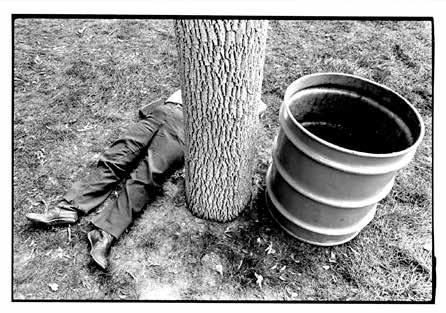
just as bold and unlikely could be sold to the voters who just re-upped 2C?
Who among us wouldn’t give a nickel of sales tax out of every $10 to end homelessness in Colorado Springs? How about just a penny?
And, I’m sorry, but if charity alone in a town with this many churches can’t solve the homeless problem, I doubt it can be done anywhere.
What if that money could be used to build more affordable-housing campuses in conjunction with organizations like Springs Rescue Mission or Colorado Coalition for the Homeless? What if it could be used to subsidize the construction of rent-controlled ADUs?
What if it could be used to help homeless people build their own homes or ADUs?
What if the old St. Francis hospital building at Pikes Peak Avenue and Prospect Street east of downtown that’s sat dormant for more than a decade now after Nor’wood Development Group purchased it for $50,000 could be turned into a new housing and services facility?
Why think small?
THE RIGHT THING TO DO
I’ve known Brian Gravestock for more than 20 years, and he’s always been one of the clearest thinkers about homelessness I’ve ever known.
He fixes up bikes for anyone in need and gives them away at the Bike Clinic Too, a garage that he uses as a bike shop on the west side. He’s in his 60s now, and
mostly retired, but he still puts in two days a week at the clinic because he has a waiting list about three months long.
His customers, most of them homeless, can be ungrateful, picky, demanding, impatient and dissatisfied with what he has for them. They often want nicer bikes than the ones he gives them, which are the bikes that have been donated to him and the bikes that are ready to ride when that person’s number comes up. Still, he does his best to indulge their requests.
He’s not a Christian, and he doesn’t consider his work charity. He doesn’t get a special feeling from it, and he’s not looking for pats on the back. He just does the work. And when you ask why he keeps building and fixing bikes and giving them away to people who often don’t even see him or his work, he says:
“Because it’s the right thing to do.”
What if instead of “keeping homelessness rare, brief and nonrecurring,” we just end it altogether?
No more hand-wringing.
No more cardboard signs.
No more feces in the doorways of downtown businesses.
No more wishing we could do more.
No more hoping it’ll go away.
No more wondering if we’re next.
No more articles on homelessness.
No more Denise Kings.
All of us. Because it’s the right thing to do.
NEWS .
KARMAN LINE CLEARS
ITS FIRST HURDLE
On the day two Colorado Springs development titans announced they had merged to create O|NE La Plata, City Council gave preliminary approval to the new company’s proposed flagpole annexation near Schriever Space Force Base.
O|NE La Plata wants to build some 6,500 dwelling units catering to Schriever and the city of Colorado Springs on the 1,900 acres of land called Karman Line that would be annexed by the city.
Karman Line lies roughly 10 miles east of Colorado Springs and is connected to the eastern reaches of the city by a strip of land along Bradley and Curtis roadways. Because of the way it looks on a map, it’s known as a flagpole annexation.
A large parcel of the annexed land would be designated for homes and mixed-use development, helping to narrow the shortfall in housing units in Colorado Springs, Tatiana Bailey, executive director of Data-Driven Economic Strategies said.
Another benefit of the project, according to the company, is the creation of an estimated 31,000 jobs and injection of $6.5 billion into the local economy.
Kevin O’Neil, founder, president and CEO of the O’Neil Group, which merged with La Plata Communities to form O|NE La Plata, told City Council that Karman Line would be a “community win.”
“O|NE La Plata will … deliver on the promise of providing a carefully planned mix of land uses that will offer opportunities to live, worship, work and play to a wide range of businesses, families and individuals,” O’Neil said in a statement. (O’Neil coowns Pikes Peak Media Company, the Independent’s parent company.)
However, critics said the proposed annexation was “not natural,” put corporate profit over residents already in the area, and was “urban sprawl designed to meet the needs of developers.”
Part of the land that would be annexed would become uninhabitable, one woman said. Her neighbor would have to move out of the home he has lived in for 25 years if the Karman Line project
gets the go-ahead, she said.
Councilmember Mike O’Malley said the development was geographically “way out there,” but even as Colorado Springs grows, “people want to be close to the center” of the city.
Ultimately, O’Malley and six other councilors voted in favor of the annexation on the first reading. Councilors Nancy Henjum and Dave Donelson voted “no.”
Flagpole annexations require two votes by City Council to pass, and a second hearing is expected to be held on Jan. 28.
Another flagpole annexation, called Amara, was rejected by City Council in August last year, after passing on first reading a few months earlier.
La Plata planned to build up to 9,500 homes plus shops, schools, parks and public infrastructure on Amara’s 3,200 acres, southeast of Colorado Springs.
In the Jan. 14 statement announcing the merger that created O|NE La Plata, the new company said it would continue its “significant immersion” in a number of projects, including Karman Line and Amara. - Karin Zeitvogel
BOOK DESERT
There has been no library, book mobile or any other lending service in northwest Colorado Springs since Rockrimmon Library closed on Nov. 30.
“We like to talk about deserts – food deserts and others – but now there’s a library desert up in the northwest,” Councilman Dave Donelson, who represents the library’s district on the City Council, said.
The grassroots group fighting to save Rockrimmon Library after the Pikes Peak Library District announced plans to close it is now a registered non-profit and is focusing on a two-fold goal: “fixing” the PPLD board and finding a temporary home for the library and meeting place for community members.
As a non-profit, COS Reads can accept tax-deductible donations in cash and kind.
The hope is that Rockrimmon Library, which was the second busiest in Colorado Springs when it was shuttered, will eventually be reabsorbed into the PPLD.
Members of the nonprofit visited the old library premises in mid-January and have held talks with a church

in the Rockrimmon neighborhood about housing a lending library until Rockrimmon Library finds a permanent home again.
As COS Reads worked to find a new premises for the library, liaisons from City Council and the Board of County Commissioners were reviewing applications from people hoping to fill the vacancy created by Dora Gonzalez’ departure on Dec. 31.
Fifty-one people applied for Gonzalez’ position. Among them were “ many highly, highly qualified individuals with impressive backgrounds in running large organizations with multi-million dollar budgets,” Rockrimmon resident Katie Czukas told City Council during the public comment period on Jan. 14.
COS Reads will push for the next board member to be someone “who would only close libraries in the district as a last resort,” Czukas said.
Donelson pledged at the same Council meeting to “join you in removing PPLD board members who think their job is to close libraries.”
Members of the PPLD board need to understand that “they can’t just do whatever they want,” he said.
“They need to listen to the people who appoint them. They can be removed for inadequate performance, and, with a budget where it was going to require less than 1% to keep that library open but they closed it – to me, that’s
inadequate performance,” he said. - K.Z.
ZOO STORY
Colorado Springs’ Cheyenne Mountain Zoo has for years been ranked one of the best zoos in North America. Late last year, it added to its stellar reputation when Aysan, a female twotoed sloth who was brought to the zoo in June 2023 to breed with a male sloth called Bosco, on the recommendation of the Hoffmann’s Two-Toed Sloth Species Survival Plan, gave birth to a healthy pup whose sex had not been identified at the time of writing.
Clearly, the sloth reproduction plan worked, but this year a blot was added to the zoo’s record when it earned a top10 spot on the list of the 10 worst zoos in North America for elephants.
Cheyenne Mountain Zoo ranked 6th on the worst zoos for elephants list, which has been compiled for 20 years by In Defense of Animals, an international group that seeks to protect animals, humans and the environment, according to its website.
It was the first time the zoo, which marks 99 years of existence this year, has been included on the list. It earned the ignominious ranking because of the “inadequate care” it provides to its five aging African elephants, In Defense of Animals said.
“Despite the zoo marketing their
Aysan the sloth cradling her unnamed baby, who was born at Cheyenne Mountain Zoo on Dec. 18, 2024. | Courtesy: Cheyenne Mountain Zoo
SIGNS AND WONDERS
Skylar
Sypher’s
irrepressible artistic impulse on full display at Cottonwood exhibit
by CANNON TAYLOR • cannon.taylor@ppmc.live
On one wall, surrealist painter Salvador Dalí winks at me, every crease on his forehead and suit so exquisitely realistic that I want to iron them out of the canvas. His right eyebrow is raised in surprise as his iconic thin mustache loops back into itself ad infinitum. The oil painting, based on one of photographer Philippe Halsman’s many black-and-white portraits of a distorted Dalí, has been colorized with magentas, maroons and ceruleans bleeding into an almost tie-dye background.
Walking to another side of the exhibit, I find myself drowning in “Underwater Ghosts,” the setting of a lucid dream made up of swirls of blue. Dim glimmers of light whisper to me through the ocean in a tinny language, weighing me down in a sluggish tide that pulls me further into the abstract recesses of consciousness. Vision blurry, I can’t make out the form of the glimmers behind the curtain, and they seem to shift from angels to baby rabbits as I rub my eyes and move on.
While visions from the afterlife and portraits of famous figures are worthy additions to the “Impulse” exhibit at Cottonwood Center for the Arts, the centerpiece can be found in the sketches of arms and hands, some reached out in yearning, others forming American Sign Language signs. The hands are surrounded by layered outlines forming a pattern similar to those found on fingerprints, which makes the artwork pop with a 3D effect.
I peruse the paintings depicting ASL signs, including “Pray,” “Dream” and “Deaf,” before the titles of other artworks in this colorful corduroy style — “Chasing My Success,” “Don’t Forget About Me” and “Girl was Broken Heart” — pummel me with the double-sided feelings of aspiration and despair familiar to anyone in their 20s. When I meet the artist, Skylar Sypher, she comes to life just as I imagined her. An initial shyness is overcome by joyful passion in her animated gestures and facial expressions.

“Stop
When I ask Sypher what she does outside of her artwork and full-time job as a dorm supervisor at Colorado School for the Deaf and the Blind, she struggles to come up with a few other hobbies: exercising, hiking and watching anime. Sypher’s artistic impulse is allconsuming, sneaking up on her during the night shift or a moment of emotional desperation.
“[Art] keeps my mind busy and focused,” Sypher said. “Sometimes I’ll just doomscroll on my phone, so I try to toss that away. I’ll put that aside and just focus on the art.”
Although Sypher has dabbled in art her entire life, it wasn’t until her mother encouraged her to take art courses at Pikes Peak State College four years ago that she stopped trapping herself in an “I can’t” mindset and began to take art seriously.
If you scroll far enough back on Sypher’s Instagram page, you’ll see a transformation
IF YOU GO
WHEN: Through Friday, Jan. 31
WHERE: Cottonwood Center for the Arts, 427 E. Colorado Ave.
HOURS: Tuesday through Thursday 10 a.m.-6 p.m., Friday 10 a.m.5 p.m., Saturday 10 a.m.-2 p.m.
WEBSITE: cottonwoodcenterforthearts.com
from hesitant, laborious sketches to more confident masterworks. What seems like magic is really persistence.
“It’s like climbing a mountain. If you fall down, you don’t want to just give up and never try again. You want to get back up and start climbing again,” Sypher said.
The outlines of Sypher’s signature style emerged in a piece depicting Hermes, the messenger of the gods in Greek mythology. Sypher used outlines to give the piece a vibrating, emotional quality. She sought to replicate the style with a new subject and soon found her muse in the human hands.
“I usually like to express emotions with a lot of hands. Hands are very important for me because it is my communication method,” Sypher said. “For some people who can hear, they might not fully understand the sign, but they still have that exposure now of seeing life and art from a different perspective, seeing the Deaf culture, being just enraptured in that.”
That’s not to say that Sypher’s style is set in stone, or that she doesn’t gather inspiration from a variety of subjects, from photographs of Bulgarian mystic Baba Vanga to the unique styles of Vincent van Gogh and Frida Kahlo.
Among Sypher’s exhibit of mostly gentle, blue illustrations of hand signs is a commanding crimson one: “Stop War.” Sypher, who was born in Ukraine and adopted at 3 years old, created the piece in reaction to the visceral emotions brought up by wars across the world.
“You don’t have to always argue over everything, and don’t have to be rude and condescending all the time. You don’t have to maintain that power and control. I mean, we’re all equal. We all deserve respect. We all deserve empathy,” Sypher said. “I want love to be expressed in my pieces, and for that to be my point.”
War” by Skylar Sypher | Courtesy: Cottonwood Center for the Arts
The Heart of the Deal
‘The Heart Sellers’ reminds us of the universality of political uncertainty
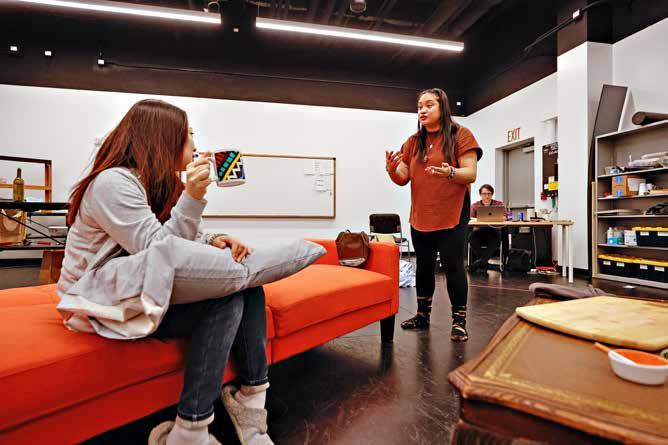
On Thanksgiving Day, 1973, two 23-year-old housewives meet in a supermarket. Seeing as both of their husbands are working overnight, Luna impulsively invites Jane over to her house to cook a frozen-solid turkey. Their conversation gathers momentum as they excitedly discover further similarities between themselves. They both shop at Kmart. They’re both immigrants. They both like yams. They each have a communist sister. And they’re both nauseatingly homesick.
In 1972, Ferdinand Marcos, president of the Philippines, and Park Chung Hee, president of South Korea, both did something similar: They declared martial law and seized dictatorial powers. It was in response to shared feelings of political uncertainty in their home countries that Luna and Jane departed for a shining Land of Opportunity.
by CANNON TAYLOR • cannon.taylor@ppmc.live
As they try to talk about lighter subjects like Disneyland and nightclubs, a terrible dread sneaks up on them. They look for music to dance to on the radio, only to be met by a rerun of Richard Nixon’s statement from five days ago: “I welcome this kind of examination because people have got to know whether or not their president is a crook. Well, I’m not a crook.”
In retrospect, Watergate feels like a prologue to a long series of presidential scandals that have eroded the American people’s wide-eyed trust in the Oval Office: Iran-Contra, Monica Lewinsky, Hunter Biden and, now, President Donald Trump’s conviction last May of 34 felony counts of falsifying business records to conceal hush money payments made to pornographic film actress Stormy Daniels. Although it takes place 51 years ago, playwright Lloyd Suh’s one-act script “The
executive orders restricting nationals from certain foreign countries from entering the United States, which he has promised to reinstate in his second term. He’s promised mass deportations, including the revoking of temporary protected status for Haitians following unfounded claims that Haitian immigrants in Springfield, Ohio, were eating their neighbors’ dogs and cats. In an interview with “Meet the Press” last month, he called birthright citizenship “ridiculous” and said he hopes to get around the 14th Amendment to put an end to it.
Throughout this tempest of uncertainty, “The Heart Sellers” is a reminder of the humanity at the heart of immigration.
“I think we’ve lost sight of why America is so great,” said Moll Reyes. “With stricter immigration laws, I think we’ve lost compassion. It feels like it becomes so number-driven, or like, ‘Keep them out. This is our place.’”
During one moment in the play, Luna has a depressing glimpse into her future. Her husband will work himself to the bone so they can gather enough money to raise children, whom she will struggle to raise because she grew up in such a different culture. At the same time, she will no longer be able to relate to her family back home. As a first-generation immigrant, she will live a life of sacrifice in an unfamiliar home, all the while grappling to understand her torn identity.
As Luna puts it, she sold her heart to gain entry to an unstable and unfamiliar country where no one seems to care if she lives or dies.
Heart Sellers” remains uncomfortably relevant. Theatreworks’ production will premiere in Colorado Springs 10 days after Trump’s second inauguration.
The biting political relevance of “The Heart Sellers” makes the timing of the production feel planned, but, in fact, it was scheduled far in advance of the 2024 election.
“A year ago, I thought I was just putting on a good play,” said director Jenna Moll Reyes. “And now, working on it in the climate that we’re doing it, in the world events that are happening, it just makes more sense to me that it is being put on right now for a reason.”
We are also at the birth of a presidential administration that has the public wondering what will become of immigration policy over the next four years.
In his first term, Trump enacted a series of
“Heart Seller” is a double entendre calling attention to the Hart-Celler Act, also known as the Immigration and Nationality Act of 1965. Since 1921, a series of immigration quotas known as National Origins Formula had been used to limit entry to those from southern and eastern Europe and bar Asians and nonwhites entirely. The Hart-Celler Act, introduced by Sen. Philip Hart and Congressman Emanuel Celler and signed into law by Lyndon B. Johnson, removed the National Origins Formula from United States immigration policy, allowing immigrants like Luna and Jane to immigrate to the United States with their husbands, who were given medical residency.
The historical context of “The Heart Sellers” is not so much a list of loudly stated facts as it is a silent, third character informing the dialogue. In the script, Luna and Jane allude to political tensions but
Min Kyung “Cecilia” Kim (Jane) and Dri Hernáez (Luna) in “The Heart Sellers” rehearsals | Credit: Isaiah Downing, courtesy Theatreworks
mostly try to focus on sunnier topics. It’s no different from the ways people today try to avoid politics in casual conversation, no matter how much it weighs on everyone’s minds.
“History repeats itself in its own way,” Moll Reyes said. “The ’70s might feel ancient to you, but then, it’s amazing how similar people still feel and go about the world.”
There’s a cynical comfort to be found in “The Heart Sellers,” as it reminds us that we’re not alone in our feelings of anxiety. We have always struggled with the brokenness of our morally gray world, its bloody history and corrupt leaders across the globe. The political uncertainty that sneaks up on us in the comfort of our homes is not unique to the United States in 2025 but transcends national borders and annals of time.
It is easy to come into someone’s home and deem it dirty, harder to condemn our own familiar filth as such. Luna and Jane’s bonding over shared disappointment in a promised land that’s not all it’s cracked up to be allows us to see the United States as a newcomer might see it.
But despite all the disillusionment and grief present in “The Heart Sellers,” at the core of the tale is blossoming friendship. Although we are each affected by leviathan political anxieties, “The Heart Sellers” is a reminder that with laugher and conversation, a little music to dance to and a shared meal of turkey, yams and wine, we can build a home even on unstable foundations.
IF YOU GO
Theatreworks’ “The Heart Sellers”
Written
by
Lloyd Suh
Directed by Jenna Moll Reyes
Starring Dri Hernáez (Luna) & Min Kyung “Cecilia” Kim (Jane)
WHEN: Thursday, Jan. 30, through Sunday, Feb. 16. Times vary
WHERE: Ent Center for the Arts, 5225 N. Nevada Ave.
WEBSITE: entcenterforthearts.org

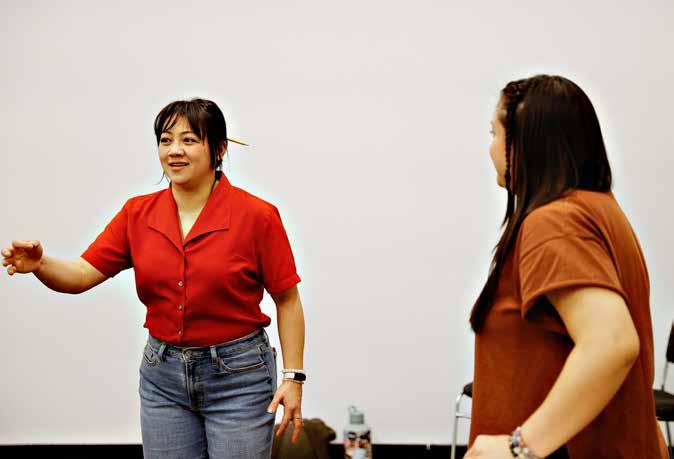
Top: Min Kyung “Cecilia” Kim (Jane) in “The Heart Sellers” rehearsals |
Credit: Isaiah Downing, courtesy Theatreworks
Bottom: Director Jenna Moll Reyes and Dri Hernáez (Luna) in “The Heart Sellers” rehearsals | Credit: Isaiah Downing, courtesy Theatreworks
Music from Grandma’s Room
A homebody by nature finds solace in finger-picked folk, theatrical instrumentals and heart-pounding punk
by CANNON TAYLOR cannon.taylor@ppmc.live
On some mornings, my partner, Salem, wakes me a half-hour early. I shuffle out of bed like a sleepy child, and they dress me in an oversized puffer jacket. I trudge outside and pray that the snow won’t take too long to fend off. Grabbing a shovel with a reserved sigh, I get to work, and after some time, I come indoors. Cane in one hand, Salem gifts me a creamy hot cocoa made with the careful alchemy of a bartender. As they sip their herbal tea, they thank me for sparing their aching joints from the chilly labor. The shower is a relief of steam before I don my armor and embark on a slushy quest of people trying not to crash their carriages into one another as they lethargically make their way to the office. On better mornings, snow layers so consistently that there’s no fending it off. Salem calls out of work, and I spend a few hours emailing and typing on my computer. As Salem goes about their business, our eyes occasionally meet, and our faces go red like teens with unrequited crushes. At lunch, we make a little conversation, and as soon as I clock out, I cuddle up with Salem under a blanket by the furnace.
Composing the soundtrack to peaceful days like these is indie folk musician Bryse Taylor, humming ethereally and fingers dancing over guitar strings.
“There’s just something lovely about being locked in a house. Even if you did want to go, there is a very grand obstacle in your way stopping you from going anywhere,” Taylor said. “I guess home is nowhere to be. It’s a very present kind of feeling.”
Taylor’s music probably brings ideas of home to mind because it is created in a floral-laden home studio, affectionately referred to as “Grandma’s Room.”
“Grandma’s Room is everything that

makes me feel cozy and comfortable,”
Taylor said. “I have a nice picture of a little rabbit that I’m a big fan of. No hard edges in there. Everything’s kind of soft and rounded, just to put myself in the mindset I want my music to inflict on others.”
While most of Taylor’s music is recorded in a self-created home, their 2023 EP
“Housesitting” was recorded in a single eight-hour session in their childhood home.
“I’m very fortunate in the way that I
do have a home studio where I can do whatever I want to. But I think the times when I was most productive were when I was living with my parents, had a garbage microphone and barely any guitar experience,” Taylor recalled.
Taylor’s musical journey began as a percussionist hitting a snare drum in the back of sixth grade band class.
Scooter and the Boys was their first band, whose only live performance was a cover
IF YOU GO
Indie 102.3 Presents: Heavy Diamond Ring, Anthony Ruptak and Bryse Taylor
WHEN: Saturday, Jan. 25, 8 p.m. WHERE: Lulu’s Downtown, 32 S. Tejon St. ADMISSION: $20
WEBSITE: lulusmusic.co
of “Coming of Age” by Foster the People at Sabin Middle School’s eighth grade talent show.
Taylor’s budding interest in rap led them to learn digital production during high school. As they browsed samples to use in instrumentals for friends to rap over, they were exposed to a wide range of influences, each more esoteric than the last.
Taylor began learning guitar in 2017 and became obsessed, spending all their free time after school learning from Marty Schwartz, professor of guitar at the prestigious university of YouTube.
Taylor can’t remember when they fell in love with the folk trappings of Adrianne Lenker, Florist and Michael Nau. The genre led them to learn finger-picking, writing original songs as practice until they were able to make even the tricky thumb move independently.
Taylor has covered a lot of ground since then in over 20 songs about being a homebody, a perceived goody-goody and a hater of lawn maintenance.
Beyond folk music, Taylor has composed instrumentals for local theater companies. Taylor’s next composition work will be for Theatreworks’ production of “Silent Sky” in May.
“I really love composing. It gives me a vehicle to be as big and as grandiose as I want to be in what I’m doing, and not have to worry about, ‘How am I going to translate this into a live setting?’” Taylor said. “I can do whatever I want, and get out the wannabe band director in me, and then use that as a way to explore songwriting in a solo sense. Get the angst out, and then go write stuff that’s just me and a guitar.”
Bryse Taylor | Courtesy: Bryse Taylor
ARTS&CULTURE .

The me-and-a-guitar approach suits intimate chamber pieces like “Annapurna,” a two-hander about a depressed, timeworn addict slowly decaying in a trailer and the ex-wife who returns after 20 years. Taylor’s 2024 EP, also titled “Annapurna,” leans into their strengths as a storyteller looking to explore painful subjects through the eyes of fictional characters.
By day, Taylor is a composer of folk and instrumental music, but by night, they don the mask of a superpowered bassist here to cause as much destruction as possible. The frenetic bouncing around onstage, the unapologetic fun and the harsh yet catchy sound of queer punk band Cabin is a marked departure from Taylor’s mellow solo work.
And yet, two years of juggling three musical ventures on top of a day job is creatively taxing. Taylor amicably departed Cabin after recording the bass parts for their 2024 album to focus on their other music.
“They’re doing a lot of really cool stuff lately, and I think they are able to do that now because they do not have a bass player that is always saying, ‘Hey, guys, I can’t. I’m too tired,’” Taylor joked. “My cardio has not been the same since when I was in that band. I miss the exercise.”
Taylor has been busy tinkering away on their debut album, “1,000 Pretty Things.” The first single, “Forever Already,” releases on Jan. 24. The song was written during a

stressful period, and through that tempest, Taylor’s partner, Kate Hertz, was their rock.
“There was a lot of teamwork and support and exhaustive conversations during that period, and it was effortless,” Taylor said.
“When everything feels like it’s against you, you at least don’t have to worry about that. … We’re taking this on as a team, and there’s not a lot of risk of friendly fire.”
After six years of creating music, Taylor has figured out what their style sounds like: a soft-edge, sun-bleached photo found in a secondhand frame; a winter coat being taken out for the first time in a year; a teddy bear that’s been loved to death, tufts pulled out and eyes chewed on. In other words, “1,000 Pretty Things” is Grandma’s Room, a sense of home.



Bryse Taylor | Courtesy: Bryse Taylor
Courtesy: Colorado Springs Chinese Cultural Institute

LET THEM TOSS CAKE
YEAR OF THE SNAKE
2
Saturday, Jan. 25, Ent Center for the Arts, 5225 N. Nevada Ave., 9 a.m. cscci.org/CNYF
The Colorado Springs Chinese Cultural Institute is ringing in the Year of the Snake with a festival boasting taiko drummers, martial arts presentations, the lion dance, Chinese instrumental performances and aerial acrobats. Bring your wallet for the merchants offering goods like snake dolls, jewelry and pottery. Visit the food trucks if you’re feeling hungry, and then the Tea House to wash it down. According to the institute’s website, people born in the Year of the Snake are wise, determined, mysterious, great speakers and formers of deep relationships. Even if you have none of these qualities, you’re still invited.
Saturday, Jan. 25, Memorial Park, 502 Manitou Ave., noon. manitousprings.org/events/ fruitcake-toss If you’re an Olympic shot put athlete turned cake baker, now is your time to shine. Now in its 30th year, the Manitou Springs Great Fruitcake Toss allows you to do unthinkable things to fruitcakes: balance them on spatula, throw them to kingdom come and devour them with your own two hands. Just try to refrain from eating fruitcakes off the ground — that job is for the pigs who eat the lopsided fruitcakes after the event.
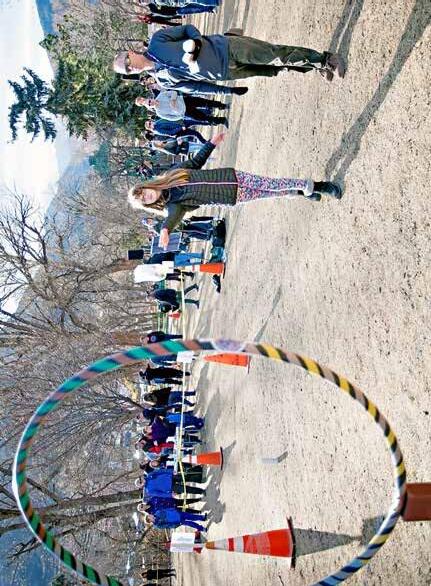

6
GOING OFF ON TANGENTS
Friday, Jan. 24, through Sunday, Jan. 26, Embassy Suites by Hilton Colorado Springs, 7290 Commerce Center Drive. Times vary. firstfridayfandom.org/cosine Sci-fi/fantasy convention COSine is paradise for a geek like me. The schedule boasts panels discussing Mars colonization, cryptozoology, the advent of AI, writing and publishing, equitable representation in STEM and separating art from the artist. That’s not
5 WAIT, MARS ISN’T HOT … Sunday, Jan. 26, Vultures, 2100 E. Platte Ave., 8 p.m. vulturesrocks.com


Listening to Hot
Like Mars for the first time is one of those experiences that has people hoping for the advent of mind-wiping technology so they can go in again blind. The jams are simply unparalleled. Ivories are tickled pink, bass lines mine the recesses of your soul, drums punch with the grace of Muhammad Ali, and enough room is left in the mix for
4 THE XANTHE FILES Thursday, Jan. 30, Lulu’s Downtown, 32 S. Tejon St., 7 p.m. lulusmusic.co Local singer-songwriter Xanthe Alexis writes Americana tunes that are equal parts impassioned and entrancing. Haunting yet playful guitar, otherworldly synth and crashing percussion beg for attention, but Alexis’ one-of-a-kind vocals undeniably take center stage. Alexis is currently fundraising for her third album, which features bassist Jimbo Hart (Jason Isbell and the 400 Unit) and guitarist Jeff King (Reba McEntire). Alexis

3 COOLEST CASTLE Through Sunday, Feb. 23, Ice Castles, 339 E. Irene Ave. Times vary. icecastles.com/cripple-creek-colorado Amateurs make castles of sand. Kings make castles of ice. Don’t miss your chance to visit the Ice Castles in Cripple Creek before they melt! There are ice slides your butt can
Courtesy: Ice Castles
Courtesy: Manitou Springs Chamber of Commerce
Luigi Scorcia, courtesy Nick Loss-Eaton Media
Courtesy: Hot Like Mars
Courtesy: Adobe Stock
mentioning the activities, which include arts and crafts, nerdy Wheel of Fortune, Legos and board games. Special guests include authors Lawrence Watt-Evans and Connie Willis. Still doesn’t sound like your thing? Check out the schedule online — chances are that something will catch your eye.
every member to have their moment in the spotlight. The only question remaining is how a little venue like Vultures is going to contain all that massive sonic energy.

10 A GARDEN’S HISTORY
Monday, Jan. 27, Garden of the Gods Park, Baymont-Garden of the Gods, N. 30th St., 1 p.m. gardenofgods.com

9 COWBOYS OF ESWATINI
squeak down, locally and internationally crafted ice sculptures to gawk, a Polar Pub to order winter-themed alcoholic drinks and countless tunnels, caverns and archways to get lost in. I advise leaving a trail of breadcrumbs and putting any kids in your party on leashes so we don’t have to thaw you out this spring. and guitarist Jeff King (Reba McEntire). Alexis will be livestreaming a Nashville fundraiser concert on Instagram on Jan. 25 and will open for Madeline Hawthorne on Jan. 30.
Our free time is limited, so some people multitask. For example, some people listen to history podcasts while exercising. That very specific niche of people will be pleased when they learn about Stroll Down Memory Lane. Park guide Bowen Gillings will hike the central trail with you while regaling you about the history of the park, from political rallies and religious services to curio shops and branding parties.
Friday, Feb. 7, Cottonwood Center for the Arts, 427 E. Colorado Ave., 6:30 p.m. ifsoc-docs. eventive.org/welcome Music knows no national borders (as any American K-pop fan will tell you). Sweet twangs and Southern drawls carry across continents and, suddenly, a pair of cousins in the African kingdom of Eswatini become passionate fans of country music. “Dusty & Stones” documents the true story of Gazi “Dusty” Simelane and Linda “Stones” Msibi’s trip to the American South to record their music and compete in a battle of the bands. Filmmaker Jesse Rudoy and producer Melissa O. Adeyemo will join the audience via Zoom for a Q&A after the screening.

FOX RUN FUN
7
8 AGELESS AMERICANA
Sunday, Jan. 26, Lulu’s Downtown, 32 S. Tejon St., 8 p.m. lulusmusic.co
Saturday, Feb. 1, Fox Run Regional Park, 2110 Stella Drive, 10 a.m. communityservices. elpasoco.com/ winter-fun-at-fox-run
When I listen to Josh Ritter’s music, I imagine it backing a montage of various people from my small-town high school prom; people who I’ve drifted apart from over the years but would have died for at the time. Ritter’s voice soothes like an aged wine, looking back on the conflicts of adolescence with perspective and a hint of regret. He creates the soundtrack of rifling through old photos, always looking back.

14
DANCING ON THE MOON

Courtesy: The Black Sheep
Tuesday, Feb. 4, The Black Sheep, 2106 E. Platte Ave., 8 p.m. blacksheeprocks.com Jazz bands Moon Hooch and Too Many Zooz have a lot in common. They both began as busking acts on the New York City subway in the early 2010s, and they both make saxophone-fronted dance music meant to get you moving and grooving. Too Many Zooz were featured on Beyoncé’s album “Lemonade,” while Moon Hooch have made a name for themselves by emulating Stomp’s use of everyday objects like traffic cones as percussion instruments.
13
SLAP IN THE FACE

12
Sunday, Feb. 2, Lulu’s Downtown, 32 S. Tejon St., 8 p.m. lulusmusic.co
The Slaps’ skeletal guitar, warbling synths and fluttering croons are more of an indie rock caress than the violent wallop their name implies. The Slaps will be joined by local acts Shop Dog, a jazz-informed indie band, and Cabin, a queer punk band whose recent album “i like feeling small” sounds like it was recorded by rocking toy robots and then pressed and played back on vinyl. More on the solo music of Cabin’s former bassist on Page 16.
VINTAGE VALENTINE
Wednesday, Feb. 5, Manitou Art Center, 515 Manitou Ave., 3 p.m. manitouartcenter.org
There’s nothing like the lace-laden, heartshaped, pastel pink aesthetic of an old Valentine’s Day card. If a plain old Hallmark valentine and supermarket flowers can’t express the depth of your love, come to Manitou Art Center to craft something for your beloved with your own hands. There is a fee associated with the class, and registration is encouraged.



Courtesy: El Paso County Community Services
Outdoor events are few and far between when it’s this cold outside, but Fox Run is embracing the winter and all the fun it may bring. The festivities are numerous, and each more twee than the last: hot dog and marshmallow roasting, arts and crafts, storytelling, wagon rides and an adorable doggie parade. If you’ve been decaying indoors watching your energetic children, this is the event for you. Tickets are $5 each, with all proceeds supporting a new nature center in Fox Run Regional Park.
11
KILLING HER SOFTLY
Thursday, Feb. 6, through Sunday, Feb. 16, Millibo Art Theatre, 1626 S. Tejon St. Times vary. themat.org
Since its origin in Italy over four centuries ago, the high-pitched, thunderous vocalizing of opera singers has shattered countless wine glasses (that is, if the trope so popular in television and movies is to be believed). If you’re one of countless victims of such glassshattering, you may find a sense of sweet vengeance in “She Dies.” Soprano Judeth Shay Comstock’s character will die 12 times in 100 minutes, making for a hilarious night of operatic satire and celebration.
Courtesy: Adobe Stock
Courtesy: Independent Film Society of Colorado
Courtesy: Garden of the Gods
Courtesy: Millibo Art Theatre
Courtesy: Lulu’s Downtown
Courtesy: Lulu’s Downtown




ARTS&CULTURE .
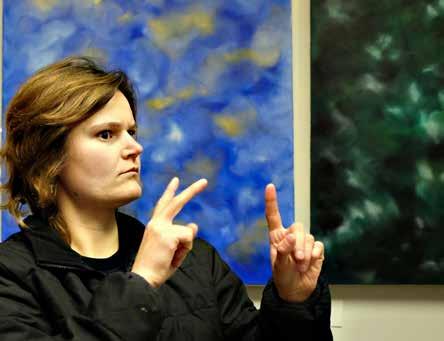
... CONTINUED FROM PAGE 13
Sypher wears open-minded curiosity on her sleeve and hopes that “Impulse” facilitates curiosity and socialization between Colorado Springs’ Deaf and hearing communities.
“Some people tell me, ‘Oh, I’m so sorry you’re deaf.’ And I just look at them like, ‘You don’t need to apologize. I’m sorry you’re hearing.’ It goes the same way. It’s not a need,” Sypher said. “I’m proud of who you are. I’m proud of how you identify yourself, and it’s the same for me.”

Skylar Sypher in her studio inside Cottonwood Center of the Arts | Credit: Ben Trollinger
ARTS&CULTURE .
I WENT TO SEE A MAN ABOUT A TYPEWRITER

IBy LAUREN CIBOROWSKI
’ve always had a hard time finding good birthday gifts for my husband, who had the absolute audacity to be born a mere fortnight after Christmas. I mean. Seriously. All the work of Christmas, and then … this? But this year I decided to try harder. And so, I went to meet a strange man on the internet. Allow me to explain. I had the sentimental thought that it would be nice to repair my husband’s vintage typewriter from his youth, which he recently brought out of storage to the delight of our 4-year-old. As far as I know, he (my husband, not the small child, but who I am I to say) hopes to eventually write the Great American Novel on it at the Iowa Writer’s Workshop. You know. Like you do.
Said typewriter was barely functional. As in, keys that barely went down, a ribbon so devoid of ink that it made ghostly marks at best, and arm keys that lingered in midair, waiting for a high-five of paper contact that would leave them hanging for all eternity.
Good intentions aside, a quick google brought up no options for local typewriter repair save one shop, which shall ominously remain unnamed (take that!). This shop was by appointment only, and the owner reluctantly spoke to me at first and then eventually stopped returning my calls. I would say I was ghost(writer)ed, but more on that later.
And so, I found myself at wit’s end, creating a Reddit account, which honestly isn’t my jam, in order to contact a person who came up through Google on a Reddit thread. This user had responded two years ago (!) to someone’s local typewriter repair request. A tenuous lead at best. But, any port in a storm, and somehow, this guy answered my DM, or whatever the hell a Reddit convo is called, and we moved it to email. At this point I learned his full name and went to Googletown to see whether or not he was a real person that I should trust with this project. Because although I am adventurous and enterprising, I try not to be stupid.
In short, I tried to Nancy Drew my way through the situation. Also, more on that later. This led to me brightly (literally!) meeting this stranger in broad daylight at a park-and-ride to hand over the goods. I felt I had done my due diligence, but then, as I was pulling up … he let me know that I could find him in a white Sprinter van. Hoo boy. I happened to be there with my dad, and after I briefly explained the situation, he graciously accompanied me to the Sprinter van in question and we realized … that it had no one in the driver’s seat. Did this man expect me to just clamber into the back?!
Spoiler: I wasn’t murdered. My typewriter-repair knight in shining armor was simply on the other side of his, as it turns out, noncreepy van, enjoying the view whilst waiting for me. He seized upon the machine with the gleeful attention of a hobbyist typewriter repair dude, which is everything I needed. Forty-eight hours later he sent me a charming typewriter report card of sorts, illuminating all the many repairs and cleaning he had done on this machine, which through his research turned out to be from 1972.
This whole episode had particularly poignant timing for me, as I have recently spent an incredibly gleeful few days reading a biography of the ghostwriters of the Nancy Drew series. How much do I love Nancy Drew? Oh! I’m so glad you asked. When I was 8 or so, I built a Nancy Drew Read in Bed Head invention, replete with a headlamp, a Walkman playing snore sounds (which I had recorded, I’m sure terribly convincingly?) and a pouch for necessary snacks (yogurt-covered raisins). This was all an ill-fated attempt to thwart my parents from stopping my nocturnal sojourns into the land of River Heights.
Though it’s 20 years old, there’s so much to love about this biography by Melanie Rehak, “Girl Sleuth: Nancy Drew and the Women Who Created Her.” More important than my small bit of sleuthing related to this project, interacting with our now-pristine typewriter has created a newfound respect in me for the primary ghostwriters of Nancy Drew. I can imagine Mildred Wirt Benson and Harriet Stratemeyer Adams, and the hours and hours they spent clacking away at a glorious machine with no delete button and no built-in white out — just grit, some QWERTY magic and a cheerful bell at the end of the line.
As of this writing, my husband has not received his riskily acquired gift. But I trust that The Mystery of the Refurbished Typewriter will have a happy ending for all. Ding!
Lauren Ciborowski writes about the arts and music in every issue. W.I.P. stands for Works in Progress.






THURSDAY, JAN. 23
Jazz Thursdays | Free, live jazz music at the Mining Exchange Hotel. 8 S. Nevada Ave. 5 p.m.
Levi Maez | Variety musician performing at Rico’s Cafe & Wine Bar. 322 ½ N. Tejon St. 5 p.m.
Acoustic Set in the Lodge | Acoustic musicians performing at Buffalo Lodge Bicycle Resort. 2 El Paso Blvd. 6 p.m.
Ava Grace | Singer-songwriter performing at Tokki. 182 E. Cheyenne Mountain Blvd. 6:30 p.m.
Orca | Indie rock band performing at Armadillo Ranch. 962 Manitou Ave. 7 p.m.
Bad Bad Hats, Party Nails | Indie bands performing at Vultures. 2100 E. Platte Ave. 8 p.m.
Horse Bitch, Same Dude, General Admission | Alternative bands performing at Lulu’s Downtown. 32 S. Tejon St. 8 p.m.
FRIDAY, JAN. 24
Katie Hale & the P-47s | Jazz band performing at Rico’s Cafe & Wine Bar. 322 ½ N. Tejon St. 6 p.m.
Michael Ray, Love & Theft, Trent Tomlinson | Country bands performing at Whiskey Baron Dance Hall & Saloon. 5781 N. Academy Blvd. 6 p.m.
Silver Moon Riders | Americana band performing at Buffalo Lodge Bicycle Resort. 2 El Paso Blvd. 6 p.m.
Darryl Worley | Country singer-songwriter performing at Phil Long Music Hall. 13071 Bass Pro Drive. 7 p.m.
Jacob Larson Band | Funk band performing at Tokki. 182 E. Cheyenne Mountain Blvd. 7 p.m.
Run With Scissors | Party rock band performing at Stargazers Theatre. 10 S. Parkside Drive. 7 p.m.
Dirty Kings, Cryptic Writings | Rock bands performing at Buzzed Crow Bistro. 5853 Palmer Park Blvd. 8 p.m.
Dylan is Dead | Pianist/vocalist performing at Armadillo Ranch. 962 Manitou Ave. 8 p.m.

SpringsSCENE
Lodge Bicycle Resort. 2 El Paso Blvd. 3 p.m.
Josh Ritter | Americana singer-songwriter performing at Lulu’s Downtown. 32 S. Tejon St. 8 p.m.
The Emo Night Tour | Emo dance party at the Black Sheep. 2106 E. Platte Ave. 8 p.m.
Head for the Hills, Feed the Dog | Bluegrass bands performing at Lulu’s Downtown. 32 S. Tejon St. 8 p.m.
SATURDAY, JAN. 25
Frank Moore | Folk musician performing at Rico’s Cafe & Wine Bar. 322 ½ N. Tejon St. 6 p.m.
Jeffrey Alan Band | Country band performing Whiskey Baron Dance Hall & Saloon. 5781 N. Academy Blvd. 6 p.m.
Look’ee Here! | Blues band performing at Buffalo Lodge Bicycle Resort. 2 El Paso Blvd. 6 p.m.
John Wise & The Tribe | Blues band performing at Tokki. 182 E. Cheyenne Mountain Blvd. 7 p.m.
Soapdish | Variety band performing at Stargazers Theatre. 10 Parkside Drive. 7 p.m.
Brahms 4 | Colorado Springs Philharmonic performing at Pikes Peak Center. 190 S. Cascade Ave. 7:30 p.m.
Family Elephant | Roots-rock band performing at Armadillo Ranch. 962 Manitou Ave. 8 p.m.
The Funeral Portrait, If Not For Me, Versus Me | Rock bands performing at the Black Sheep. 2106 E. Platte Ave. 8 p.m.
Heavy Diamond Ring, Anthony Ruptak, Bryse
Taylor | Indie musicians performing at Lulu’s Downtown. 32 S. Tejon St. 8 p.m.
Ryan Flores | Latin musician performing at Ohana Kava Bar. 112 E. Boulder St. 8 p.m.
Undercover | Cover band performing at Buzzed Crow Bistro. 5853 Palmer Park Blvd. 8 p.m.
SUNDAY, JAN. 26
Brahms 4 | Colorado Springs Philharmonic performing at Pikes Peak Center. 190 S. Cascade Ave. 2:30 p.m.
Kip & Friends | Jazz band performing at Armadillo Ranch. 962 Manitou Ave. 2:30 p.m.
Colorado Springs Pickers Bluegrass Jam
| Bluegrass musicians performing at Buffalo
MONDAY, JAN. 27
Open Mic Night | Music and comedy open mic at Vultures. 2100 E. Platte Ave. 6 p.m.
TUESDAY, JAN. 28
Stony Jam | Reggae band performing at Armadillo Ranch. 962 Manitou Ave. 8 p.m.
WEDNESDAY, JAN. 29
Katie Hale & The P-47s | Jazz band performing at Tokki. 182 E. Cheyenne Mountain Blvd. 6:30 p.m.
Wednesday Night Record Club | Vinyl record listening party at Lulu’s Downtown. 32 S. Tejon St. 9 p.m.
THURSDAY, JAN. 30
Jahida Esperanza Duo | Jazz duo performing at Rico’s Cafe & Wine Bar. 322 ½ N. Tejon St. 5 p.m.
Jazz Thursdays | Free, live jazz music at the Mining Exchange Hotel. 8 S. Nevada Ave. 5 p.m.
FlashJam | Bands performing at Buzzed Crow Bistro. 5853 Palmer Park Blvd. 5:30 p.m.
Acoustic Set in the Lodge | Acoustic musicians performing at Buffalo Lodge Bicycle Resort. 2 El Paso Blvd. 6 p.m.
Colorado Music Education Association
Jazz Jam Quintet | Jazz quintet performing at Armadillo Ranch. 962 Manitou Ave. 6 p.m.
Susan Rissman Trio | Jazz trio performing at Tokki. 182 E. Cheyenne Mountain Blvd. 6:30 p.m.
Madeline Hawthorne, Xanthe Alexis | Folk singer-songwriters performing at Lulu’s Downtown. 32 S. Tejon St. 8 p.m.
FRIDAY, JAN. 31
Grapefruit Moon | Folk trio performing at Rico’s Cafe & Wine Bar. 322 ½ N. Tejon St. 6 p.m.
The Mitguards | Folk band performing at Buffalo Lodge Bicycle Resort. 2 El Paso Blvd. 6 p.m.
Dalonious Funk | Funk band performing at Tokki. 182 E. Cheyenne Mountain Blvd. 7 p.m.
Randy Stephens | Stevie Ray Vaughan tribute
band performing at Stargazers Theatre. 10 Parkside Drive. 7 p.m.
Eighth Street Alley | Variety band performing at Armadillo Ranch. 962 Manitou Ave. 8 p.m.
While We’re Young: A One Direction Dance Night | One Direction dance party at the Black Sheep. 2106 E. Platte Ave. 8 p.m.
Yonder Mountain String Band | Bluegrass band performing at Lulu’s Downtown. 32 S. Tejon St. 8 p.m.
SATURDAY, FEB. 1
Rafiel & the Roomshakers | Soul band performing at Rico’s Cafe & Wine Bar. 322 ½ N. Tejon St. 6 p.m.
Red Mountain Highway | Country band performing at Whiskey Baron Dance Hall & Saloon. 5781 N. Academy Blvd. 6 p.m.
Super Premium Ultra Deluxe | Groove band performing at Armadillo Ranch. 962 Manitou Ave. 8 p.m.
Yonder Mountain String Band | Bluegrass band performing at Lulu’s Downtown. 32 S. Tejon St. 8 p.m.
Sleaze Freaks: An Indie Sleaze Dance Party | Indie dance party at Vultures. 2100 E. Platte Ave. 8:30 p.m.
SUNDAY, FEB. 2
Colorado Springs Pickers Bluegrass Jam | Bluegrass musicians performing at Buffalo Lodge Bicycle Resort. 2 El Paso Blvd. 3 p.m.
The Slaps, Shop Dog, Cabin | Indie bands performing at Lulu’s Downtown. 32 S. Tejon St. 8 p.m.
TUESDAY, FEB. 4
Moon Hooch, Too Many Zooz, Honeycomb | Dance bands performing at the Black Sheep. 2106 E. Platte Ave. 8 p.m.
WEDNESDAY, FEB. 5
Black Rose Acoustic Society Showcase | Acoustic musicians performing at Buffalo Lodge Bicycle Resort. 2 El Paso Blvd. 6 p.m.
Tyler Griffith | Musician performing at Tokki. 182 E. Cheyenne Mountain Blvd. 6:30 p.m.
Wednesday Night Record Club | Vinyl record listening party at Lulu’s Downtown. 32 S. Tejon St. 9 p.m.
Horse Bitch plays Lulu’s Downtown on Jan. 23 | Courtesy: Horse Bitch
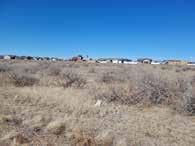







enclosure as a ‘retirement haven,’ the reality is so bad it prompted the Nonhuman Rights Project (NHRP) to file legal action to force the zoo to send its elephants to a sanctuary,” the animal protection organization said on its website.
Cheyenne Mountain Zoo’s president and CEO, Bob Chastain, said the zoo is “simply too busy improving the lives of animals to be bothered by this annual list, which is ignored by most people.”
The zoo was still awaiting a decision from the Colorado Supreme Court on the lawsuit brought by the NHRP, which alleges the elephants – Jambo, Kimba, Kimba Lou, Lucky, and Missy, all aged between 41 and 55 – are being “unlawfully confined in violation of their common law right to bodily liberty protected by habeas corpus.” NHRP wants the pachyderms to be released to an elephant sanctuary.
The zoo declined to provide images of the elephants. The baby sloth, meanwhile, has been bonding in private with its mom and is expected to make its first public appearance in the coming weeks. - K.Z.
FOUNTAIN CREEK FUNDS
The City of Colorado Springs and Fountain Creek Watershed have received $700,000 in federal grants for Fountain Creek watershed restoration projects. The grants from the U.S. Bureau of Reclamation will support watershed restoration efforts to improve water quality, reduce erosion and flooding, and protect vital infrastructure and wildlife. “This support for the Colorado Springs area will help one of Colorado’s most populated watersheds continue to provide clean, clear water for hardworking people in El Paso County and communities further downstream. We work closely with local partners to win important federal
funding and better support Colorado communities, farms, and our water future,” said Governor Jared Polis. Three-hundred-thousand dollars will be used to create a water strategy for the Monument Creek corridor, while $400,000 is earmarked to restore and protect a 1.5-mile stretch of the Fountain Creek Basin. - Staff report
THEY SWEAR
Three El Paso County Commissioners and the Fourth Judicial District Attorney were sworn in today during a ceremony at Centennial Hall. Administering the oaths of office was Fourth Judicial District Chief Judge Erin Sokol. Commissioner Carrie Geitner, representing District 2, was re-elected to another four-year term in office. Commissioner District 2 extends from the east side of Colorado Springs neighborhoods and includes Falcon, Peyton, Calhan and Ramah.
Newly elected to represent District 3 is Commissioner Bill Wysong, who is replacing term-limited Stan VanderWerf. District 3 encompasses the western portion of El Paso County, including Palmer Lake, Manitou Springs and Green Mountain Falls.
Also new to the Board of County Commissioners is Commissioner Cory Applegate, representing District 4. Previously serving as District 4
Commissioner was Longinos Gonzalez, Jr., who was also term limited. District 4 is made up of the southern portion of El Paso County, including Fort Carson, Security-Widefield and Fountain.
Each of the three Commissioners were elected to serve for a four-year term.
Fourth Judicial District Attorney Michael Allen was also sworn in during the ceremony after being re-elected to serve a second four-year term. The Fourth Judicial District represents both El Paso and Teller Counties.

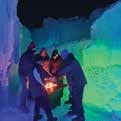





Pet Deserves Tender Care
THAW-STRUCK
Carbondale nature writer/photographer captures Arctic beauty and fragility in the face of global climate change
By JEFFERY PAYNE • Rocky Mountain Reader •
Jon Waterman, a Carbondale writer and photographer, takes us on a beautiful and captivating excavation through the very complicated and layered challenges of the Arctic climate crisis in his latest book, Into the Thaw. Waterman, an insightful nature writer, seasoned outdoorsman, and former park service ranger, lets us tag along as he revisits memories and places along the Noatak River in Gates of the Arctic National Park in Alaska, the second largest national park in the US encompassing over 8.4 million acres. His sharp eye and persuasive expression help us experience first-hand how climate change is shifting the Arctic environment and its people.
has affected the vast tundra wilderness and the people who live there. Over 500 miles by boot and boat, they see firsthand how the delicate ecosystem is changing. This time around, he’s stunned to see how much the region has transformed.







Waterman begins the book with “An Arctic Primer,” giving the reader a condensed lesson in biology, geology and history that is over a billion years in the making. Waterman first laid eyes on the Noatak in 1983 while working for the park service in Denali. Along with a fellow ranger, he embarked on an exhilarating 45-mile paddling trip that lasted for seven days. This adventure allowed them to immerse themselves in the majestic wandering river and has left Waterman fascinated by its beauty and importance ever since.

In the summer of 1998, the author embarked on a solo adventure to the Arctic. This journey allowed him to gain a deeper appreciation for the land, water and native peoples he encountered. His experiences are beautifully written with a sense of wonder and awe. He shares his encounters with bears, wolves and the infamous mosquitoes, all while reflecting on his insights. With fortitude of strength I cannot even imagine, Waterman battles elements of the natural world to expand his knowledge and understanding. It’s clear that he has a deep love and respect for nature, and his passion shines through in every page.
After nearly 40 years since his first visit, Waterman once again travels back to the area. The author and a fellow adventurer set out on another trek along the Noatak. Their mission is to explore how the climate crisis
A chance encounter with a pair of fish ecologists explains how climate change is messing with the salmon’s life cycles because of habitat loss, dams and development. Waterman and his traveling companion stay with friendly Inupiat people whose traditional subsistence way of life is in danger. Rising water levels are slowly encroaching into villages. The sea ice that used to cover the shorelines and protect the villages is almost gone. The caribou are scarce, and heavy rainfall has filled river edges with silt and mud. Wildfires are becoming a common occurrence, and the temperatures in the Arctic Circle have reached 90 degrees in the summertime. Beavers, which arrived roughly twenty years ago—it used to be too cold in this region for trees to grow—are contributing to thawing of the permafrost by damming streams which create ponds that retain heat. Melting permafrost creates thermokarsts—think of these as huge open wounds upon the land. Growing thermokarsts ebb away at the tundra which is vital to nearly all life in the Arctic. The challenges are formidable. Into the Thaw is a summons to us to consider our part in the climate crisis and how we might be able to protect our fragile environment. It is also inspiring; despite the overwhelming odds of righting the global warming ship, Waterman brings us hope and encouragement not to give up. The book is filled with striking photographs mixed with bits of memoir and eloquent nature writing. A must read for any nature lover.
Jeffery Payne has been a bookseller for over 40 years. Currently living and working in downtown Colorado Springs, he is incredibly grateful that he gets to do what he loves to do. When not shelving books he can be found tending his garden and working out ways to sneak more books into the house. This interview was
published
n






BEST BITES

128 S Tejon St.
(Historic Alamo Building)
719-635-3536

326 N Tejon St.
719-228-6566
GERMAN

34 E. Ramona Ave.
(S. Nevada & Tejon)
719-633-2220
MEXICAN

222 N Tejon St. 719-636-2311
MacKenzie’s Chop House
Voted Best Power Lunch, Steakhouse, and Martini! Downtown’s choice for quality meats and mixed drinks. Open Monday-Friday 11:30am-3:00pm for lunch and 5pm every day for dinner.
MackenziesChopHouse.com
Tony’s Downtown Bar
Winners of 80+ Independent “Best Of” Awards in 25 years. A great Midwestern Tavern with warm beer, lousy food & poor service!!! Pabst, Leinenkugel’s, fried cheese curds, , walleye fish fry, cocktails, burgers, and more. 11am-2am daily. Happy Hour 3-6pm. GO PACK GO!
TonysDowntownBar.com
Edelweiss
For 55 years Edelweiss has brought Bavaria to Colorado Springs! Using fresh ingredients, the menu invites you to visit Germany. Voted Gold Best German, Silver Dessert Menu, and Bronze Best Patio by Indy readers! Reservations and the menu can be found online at EdelweissRest.com


2028 Sheldon Ave.
719-836-1932
Celebrating 50 years! Authentic Tex-Mex & Mexican fare in a contemporary Santa Fe-styled establishment. Across from Acacia Park Downtown. Award-winning queso, chili rellenos, and mean green chili. JoseMuldoons.com
South Park Brewing
Craft brewing at 6050’! Best Smashburger in Colorado Springs. Brewpub and Distillery Tasting Room. Family-owned, award-winning beer. Butter burgers, chicken tenders, and Nashville hot chicken on the menu. Cocktails and wine. Plenty of on-site parking. SouthParkBrewingColorado.com

José Muldoons
WHAT A NEW PUBLIC LANDS ACT MEANS FOR RECREATION
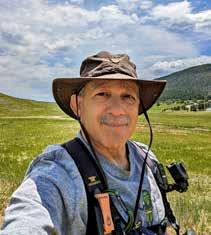
By BOB “HIKING BOB” FALCONE
Years in the making, the bipartisan supported Expanding Public Lands Outdoor Recreation Experiences Act, or EXPLORE Act, finally passed through both the U.S. House of Representatives and U.S. Senate in the final day of December and was signed into law by President Joe Biden right after the start of the new year.
The act is broad in scope (you can read it here: tinyurl.com/46ymnuek) and touches on almost every aspect of outdoor recreation.
The act “declares that it is the policy of the Federal Government to foster and encourage recreation on Federal recreational lands and waters” and creates a “Federal interagency council on outdoor recreation,” which is made up of just about any federal agency that has anything to do with public lands that you can imagine, such as the National Park Service, U.S. Forest Service, Bureau of Land Management, Fish and Wildlife Service, Army Corps of Engineers, Bureau of Reclamation, Bureau of Indian Affairs and, well, you get the idea. If it’s part of the alphabet soup of federal agencies, it is part of this council. There even are provisions in the act to work with state agencies as needed.
Here are some highlights from the EXPLORE Act:
• Within the next 18 months, applicable agencies would have to identify at least 10 “long distance” bike trails that are already in existence that make use of existing trails and roads, and identify at least 10 additional areas where there are opportunities for bike trails to be developed or completed. These trails would not be placed where already not permitted, such as in designated wilderness areas. “Long distance” is described here as being a natural surface trail or combination of trails with a one-way distance of a least 80 miles. Connections on pavement between
sections of natural surfaces would be allowed.
• Within the next 18 months, the act would develop guidance for recreational rock climbing on federal lands and recognize that rock climbing, including the installation and maintenance of fixed anchors, is an appropriate use within designated wilderness area. It also directs that existing rock climbing routes be maintained and permitted.
• Within one year, each National Forest and Bureau of Land Management district shall identify their established recreational shooting ranges and, if they don’t have one, explain what land-use requirement is preventing the establishment of a range.
• For photographers and videographers, it eliminates the need for permits to shoot in National Park Service sites and on other federal lands, where the photography or filming takes place in areas where the public is generally allowed, involves less than five or six people, and does not interfere with the general public’s use and enjoyment of the location or cause damage to the property. The issue of permits to film and photograph has been particularly contentious between the National Park Service and photographers, with each NPS site having its own rules — if any — and a permitting system that often denied permits without explanation. A lawsuit was filed by the Foundation for Individual Rights and Expression against the NPS this past December on behalf of videographers over their inconsistent permitting rules. The provisions in the EXPLORE Act appear to address many in the lawsuit. The EXPLORE Act will still prohibit the use of drones on certain lands, including NPS sites, wildlife refuges and other designated areas.
• The act requires that the BLM and Forest Service produce motorized usage maps within the next five years, and maps for “over-snow” vehicles (snowmobiles, etc.) within the next 10 years.
• The act also requires government agencies to work with state, local and tribal governments, along with housing authorities, trade associations, nonprofits and private entities of “gateway communities” — communities adjacent to recreation areas — to identify the needs and impacts created by the recreational uses. This would include housing shortages, impacts to local infrastructure, and accommodation and management of visitors. It also requires that underutilized federal recreational lands and waters be identified, and that development, expanding or enhancing recreational uses be explored to benefit gateway communities.
• Broadband internet and cellphone service

on federal lands would be improved under this act, especially in developed recreational sites. This doesn’t mean, however, that cellphone towers will start popping up all over otherwise pristine areas, since installations that would interfere with National Park viewsheds, cultural or natural resources, visitor experiences, and historic properties and their viewsheds would be prohibited. You’ll probably get better service at your campground or lodge, but you will still remain disconnected while in the backcountry.
• The act allows for partnerships between state, local and tribal governments to use their funds to modernize federally owned campgrounds, resorts, lodges and visitor centers. This will allow sites in need of improvement but for which there is no federal funding available to be rescued by local entities.
• The act also directs for the improvement and increasing of parking and bathroom facilities at recreational sites, and that agencies can also enter into agreements with local governments to manage and pay for these projects.
• Access to public recreational lands for disabled users will increase, with the act directing government agencies to conduct an assessment within the next five years of all campsites, boat ramps, shooting ranges and other facilities to determine their usability by disabled persons. Government agencies will have seven years to conduct an assessment of all trails in their inventory, to include tread type, width and slope, and also trail length, to determine their suitability for disabled users and to make the information easily available to the public, in consultation with veterans groups and other groups with experience and expertise in handicapped accessibility for outdoor recreation. It gives the Forest Service, NPS, BLM and Fish and Wildlife Service one year to develop three new accessible sites each.
• The act requires that within two years public land agencies work with the Department of Veterans Affairs and Department of Defense to develop information about recreational opportunities to military personnel and veterans and to maintain free access to public recreational lands.
• The act gives federal agencies two years to develop plans to increase youth access and visits to public recreation lands and waters.
• The commercial use permitting process will undergo a major overhaul under the act, which calls for system modernization along with simplification of permitting rules and regulations.
• America the Beautiful passes, which provide access to all federal recreational lands, will be able to be purchased online, and also be available in a digital form to be used on smartphones, by the beginning of 2026. Currently, the passes are only available as a physical card.
• Seasonal closing of federal recreational lands will now be based on making recreational use a priority in determining when, or if, lands will be closed.
• Volunteer opportunities will be increased on all federal lands.
There is a lot to this act, and I’ve barely scratched the surface in this very condensed article. To get the full breadth of it, go to tinyurl.com/46ymnuek.
Be Good. Do Good Things. EXPLORE.
Bob “Hiking Bob” Falcone is a retired career firefighter, USAF veteran, an accomplished photographer and 30-year resident of Colorado Springs. He has served on boards and committees for city, county and state parks in the Pikes Peak region, and spends much of this time hiking 800 or more miles each year, looking for new places and trails to visit, often with his canine sidekick Coal.
| Credit: Adobe Stock







PUZZLES!






• Must be 25 years or older
• Must successfully complete a fingerprint-based criminal history check
• We are a drug-free company, including medical marijuana
• Must be able to pass a DOT physical and drug screen
We’re looking for safe, conscientious, and professional black car, SUV, and non-CDL mini bus drivers who will be crucial in providing a top-tier experience for our exclusive clientele. If you have a passion for excellence, we want to hear from you!
• Medical, Dental, and Vision Insurance available for qualified employees
• 12 Paid Holidays, including your birthday! New Year's Day, Martin Luther King Jr. Day, Presidents' Day, Memorial Day, Juneteenth, Independence Day, Women's Equality Day, Labor Day, Veterans' Day, Thanksgiving, Christmas, and yes, your birthday.
• PAY: $20 per hour, plus gratuity!
Are you ready to drive in style and be part of a legacy of excellence? Gray Line of Colorado, a family-owned transportation company, has been delivering exceptional service for 49 years to top executives, high-profile professionals, and VIP guests. We specialize in providing transportation to high-end resorts and destinations, earning a reputation for safety, reliability, and world-class customer service.
Whether you’re seeking full-time, part-time, seasonal, or casual work, we offer flexible opportunities to suit your lifestyle. Join a diverse team that stands for excellence and be part of something extraordinary!
This is your opportunity to be part of an exceptional company that values both its drivers and guests. Gray Line of Colorado is an equal opportunity employer. We celebrate diversity and are committed to creating an inclusive environment for all employees. Don't miss out - apply now and join us in serving out VIP clients!


CAREER OPPORTUNITY - DAVID C COOK
Learning Management System (LMS) Specialist (Spec), F/T, David C Cook, Colorado Springs, CO. Provide concierge-level service to customers/users: facilitating use of solution utilized for hosting digital curriculum & products; coordinating & organizing LMS content loading, tenancy management, data integration; user onboarding, training & tech support; advising on strategies to increase engagement; ensuring tech integrations; supporting data analysis/marketing promotions. Requires: Bachelors in Information or Learning Technology + 3 yrs exp as Learning Spec, Training & Development Spec or Training & Development Mgr with exp in: learning content/ curriculum; administering LMS; capturing/editing/converting images/ videos; analytical software/tools; SAS technologies & system functionality; large data sets, performing analysis & creating summary reports; customer support & training. Benefits: medical, dental, vision, life insurance, disability; 401(k), voluntary accidence, HDHP, life assist; adoption, benevolence fund, sick time, holidays, maternity/paternity leave; tuition reimbursement, new childbirth assist. Salary: $54,787-$64,509. Resume: Labrittany Coleman, HR Generalist, David C Cook, 4050 Lee Vance Drive, Colorado Springs, CO 80918; or by email: labrittany.coleman@davidccook.org.
FUN&GAMES SOLUTIONS .


FUN&GAMES .
News of the WEIRD
BY THE EDITORS AT ANDREWS MCMEEL SYNDICATION
FELINE WORKERS
On Jan. 5 in rural Norton, Kansas, temps following the big snowstorm weren’t even reaching 20 degrees, and the wind chill was 5 below zero, KAKE-TV reported. That didn’t stop two linemen who were trying to restore power to area residents from going above (literally) and beyond: On top of a utility pole, a bobcat and her kitten were frozen to the line and the pole. Dominic Urban and Eric Hartwell worked for about two hours to free the frigid felines. “I couldn’t knock them off,” Urban said. “(The mother) was frozen down to the top of the pole. ... I beat the ice loose, then lowered her to the ground. I had to do the same with the kitten.” He said the mom and kitten ran off immediately after reaching the ground.
IT’S ORWELLIAN
A pair of pernicious porcine perpetrators are in the crosshairs of the Pataskala, Ohio, Police Department after a horrendous incident on Christmas Day, WOIO-TV reported. According to Chief Bruce Brooks, family members called for a welfare check on 75-year-old Rebecca Westergaard when they couldn’t reach her. Police found the woman dead on her property near her home. Westergaard had been mauled and eaten by two pigs that belong to her neighbor, police said. Brooks said it’s unclear whether charges will be filed, since the animals are livestock rather than pets. “It’s just not something we’ve ever dealt with here,” Brooks said.
HAVE A SEAT?
If you own a Toto Washlet bidet toilet, listen up: Don’t wipe the seat with toilet tissue. United Press International reported on Jan. 3 that owners have been complaining about the seats getting scratch marks and becoming discolored. A Toto spokesperson said the tissue can cause tiny scratches that expand and trap dirt. Instead, customers are urged to use a soft cloth and diluted detergent. The company also said there are “no plans to change the material at this time.”

EPIC PASS
The Summit County (Colorado) Sheriff’s Department responded to a call on Jan. 7 on the slopes of Keystone Resort: not an injured skier, but a wayward car that had taken a wrong turn and ended up on the Schoolmarm ski run. United Press International reported that the abandoned car had a note on the windshield, explaining that the driver had been following GPS and ended up stuck in the snow. A tow truck removed the car, which was returned to the owner.
NO STORE HERE
A small Welsh village has been inundated by shoppers looking for an Aldi supermarket that doesn’t exist, Oddity Central reported on Jan. 6. A pin on Google Maps, probably dropped as a prank, directs shoppers and delivery drivers to a grassy field in Cyffylliog, leaving locals unamused. One large milk tank truck became stuck on a narrow village street while trying to locate the store, and “a bloke with a pallet of bread ... thought he’d been hired to stock shelves,” one resident said. Finally, Aldi got involved and said it would work with Google Maps to get the pin removed.
IT’S COME TO THIS

The Federal Agency for the Safety of the Food Chain in Belgium was forced to issue a warning to the country on Jan. 7 against eating Christmas trees, United Press International reported. The statement was in response to the city of Ghent recommending cooking with conifer needles. “You can make delicious spruce needle butter with them for bread or toast,” Ghent’s website read. But the FASFC wasn’t having it: Christmas trees “are not meant to end up in the food chain” because many have been treated with pesticides and other chemicals, including flame retardant. Ghent responded by changing its headline to read “Scandinavians eat their Christmas trees” and added a warning: “Not all Christmas trees are edible.” Way to throw the Vikings under the bus, Belgians!
Special offers and discounts at many partner businesses throughout Colorado Springs with your annual subscription to the Independent
Small sample of offers:
20% off at Ephemera Dinners, Piglatin Cocina, Coati Uprise, OLA Juice Bar, Brakeman’s Burger Bar, Anju, Arepapi, Green Freak, Toasted Bunz Buy One Get One breakfast cocktails at Notes Eatery
15% discount at Camera Master for photography package
$10 off every $40 at Bourbon Brothers
3D printed item from Space Foundation Discovery Center 10% discount at Rock Bottom Restaurant and Brewing
Horoscopes .
FREE WILL ASTROLOGY
ARIES (March 21-April 19): Author Anaïs Nin wrote, “Life shrinks or expands in proportion to one’s courage.” I bring this to your attention because you Aries folks now have a mandate to expand your life through courageous acts, thoughts, and feelings. I suggest we make the Arctic fox your power symbol. This intrepid creature undertakes epic migrations, journeying over 2,000 miles across sea ice, using starlight and magnetic fields to navigate. Let’s dare to speculate that you have something in common with it; let’s propose that you are equipped with an inner guidance system that gives you a keen intuitive sense of how to maneuver in unfamiliar territory. PS: Anaïs Nin has another tip: “We don’t see things as they are, we see them as we are.”
TAURUS (April 20-May 20):Taurus archeologist Howard Carter made a spectacular discovery in 1922: the intact tomb of the Egyptian Pharaoh Tutankhamun, more than 3,300 years after his death. It was filled with over 5,000 artifacts, became a global sensation, and to this day remains the most famous find from ancient Egypt. A short time before he succeeded at his five-year quest, Howard Carter nearly gave up. But then his sponsor agreed to provide funds for a few more months, and he continued. In this spirit, Taurus, I urge you to keep pushing to fulfill your own dream. Renew your faith. Boost your devotion. Remember why you feel so strongly.
GEMINI (May 21-June 20): The James Webb Space Telescope is the largest telescope in space. Recently, it discovered hundreds of galaxies that no humans had ever before beheld. They are very old, too—far more ancient than our own Milky Way Galaxy. I propose we make this marvelous perceptionenhancing tool a symbol of power for you. According to my analysis of the astrological omens, you now have a robust potential to see things that have always been invisible, secret, or offlimits to you. Some of these wonders could motivate you to reinterpret your life story and reshape your future plans.
CANCER (June 21-July 22): One theory says that humans evolved to be afraid of reptiles because our early ancestors were frequently threatened by them. Among the most commonly feared creatures in modern culture are snakes. And yet, as anyone knows if they’ve studied mythology, snakes have also been symbols of fertility and healing in many cultures. Because they periodically shed their skin, they also represent regeneration and rebirth. I’m hoping you don’t harbor an instinctual aversion to snakes, Cancerian. The coming weeks will be a favorable time for you to call on and benefit from their iconic powers.
LEO (July 23-Aug. 22): In the coming months, be extra creative as you enhance your network of connections and support. Encourage your allies to provide you with tips about opportunities and possibilities that you would not otherwise know about. Ask them to serve as links to novel resources that will nurture your longterm dreams. Here’s an idea to energize your efforts: Get a vivid sense of how trees use vast underground fungal webs to communicate with each other. (Learn more here: bit.ly/TheWoodWideWeb) Knowing about this natural magic may impregnate your subconscious mind with evocative suggestions about how to be ingenious in weaving the kind of community you want.
VIRGO (Aug. 23-Sept. 22): I love my job as a horoscope writer. What could be more fun than analyzing cosmic signs to generate inspirational counsel for my readers? It’s a big responsibility, though. I am intensely aware of how crucial it is that I craft my messages with utmost care and compassion. Having been scarred as a young adult by reckless, fear-mongering fortune-tellers, I’m rigorous about nurturing your free will, not undermining it. I want you to be uplifted, not confused or demoralized as I was. With these thoughts in mind, I invite you to take a vigorous inventory of the effects that your work and play have on the world. Are they aligned with your intentions? Are your ambitions moored in impeccable integrity?
LIBRA (Sept. 23-Oct. 22): Why are diamonds considered so valuable? I’m skeptical. High-grade diamonds are not as rare as public perception would lead us to believe. Yes, they are extraordinarily hard and scratch-resistant, but is that a reason to regard them as a sublime treasure? I acknowledge they are pretty in a bland way. But other gems are more intriguingly beautiful. Maybe the most important reason they are so prized is that diamond sellers have done effective marketing campaigns to promote them as symbols of love and luxury. All this is a prelude to my main message: Now is an excellent time to think and feel deeply about what is truly beautiful to you—and take steps to bring more of it into your life. For you Libras, beauty is an essential ingredient in your life’s purpose.
SCORPIO (Oct. 23-Nov. 21): The way that ancient Romans made concrete was more ingenious than modern methods. Their manufacturing materials included “lime clasts,” which gave the concrete self-healing qualities. When cracks arose, they fixed themselves. That’s why Roman aqueducts built 2,000 years ago can still convey water today. Metaphorically speaking, I hope you will work on building similar structures in the coming weeks. It’s time to create strong foundations that will last for a very long time.
BY ROB BREZSNY
CAPRICORN (Dec. 22-Jan. 19):
Bristlecone pine trees grow very slowly, but they are hardy and longlived. Their wood is so dense and strong that it’s virtually immune to disease, insects, and erosion. They grow in places that are inhospitable for many other trees, flourishing in cold, windy environments where the soil is not particularly rich in nutrients. For the bristlecone pine, apparent obstacles stimulate their resilience. I don’t want to exaggerate the ways they remind me of you Capricorns, but you and they certainly have affinities. I believe these shared qualities will be especially useful for you in the coming weeks.
AQUARIUS (Jan. 20-Feb. 18): In old Hawaii, it was forbidden for ordinary people to touch objects that belonged to the chiefs or to anyone with spiritual powers. Other taboos: Never walk across the shadow of an important person and never wear red and yellow feathers. Our modern taboos are different, but often equally rigid. For example, you are probably hesitant to ask people how much money they make or what their relationship status is. What are other taboos you observe? I won’t outrightly advise you to brazenly break them, but now is a good time to re-evaluate them—and consider changing your relationship with them.
SAGITTARIUS (Nov. 22-Dec. 21):
Do you harbor a yearning to learn a new language, new skill, or new trick? The coming weeks will be a favorable phase to get serious about doing it. Have you fantasized about embarking on an adventure that would expand your understanding of how the world works? The time is right. Have you wished you could attract an inspirational prod to unleash more creativity and experiment freely? The astrological omens suggest that inspirational prod is imminent. Have you wondered whether you could enhance and finetune your receptivity—and thereby open up surprising sources of fresh teaching? Do it now!
PISCES (Feb. 19-March 20): As winter progresses, each day is longer and each night shorter. Most humans feel an undercurrent of joy that the amount of light in the world is growing. But as an astrologer who appreciates cycles, I like to honor the beauty and powers of darkness. That’s where everything new gets born! It’s where the future comes from! In ancient Hawaiian religion, the word kumulipo meant “beginning-in-deepdarkness.” It was also the name of a prayer describing the creation of the world. In the coming weeks, I believe you will be wise to tap into the rich offerings of darkness.





OWN THE STOCK THAT ROCKS
DISRUPTING THE MUSIC & HOSPITALITY INDUSTRY

VENU is revolutionizing live music and hospitality nationwide, creating unforgettable moments through luxury outdoor venues (Ford Amphitheater & Sunset Amphitheaters), five-star restaurants (Bourbon Brothers Smokehouse & Tavern, soon to open Roths Seafood & Chophouse), and intimate music halls (Phil Long Music Hall, The Hall at Bourbon Brothers). Backed by $166.6M in total assets, 56% YoY revenue growth, and projected revenue of $200M in 2025, our innovative model boasts seven streams of revenue and exclusive partnerships with industry leaders like AEG Presents, Ford, and Troy Aikman, three-time Super Bowl Champion and Founder of EIGHT Elite Light Lager, ensuring experiences that resonate far beyond the stage.

Recognized by publications such as The Wall Street Journal, The New York Times, Billboard, Pollstar, and Variety, VENU is fan-founded and fan-focused. We connect, elevate, and redefine live music and hospitality experiences.
Be part of the future of live entertainment. Discover and join the movement at venu.live/invest VENU, listed on the NYSE American: VENU
